
- Huasco Valley
- San Pedro de Atacama
- Elqui Valley
- Antofagasta
- Limarí – Fray Jorge National Park
- Bahía Inglesa
- Alto El Loa
- La Serena and Coquimbo
- Copiapó Valley
- Tagua Tagua – Almahue Valley
- Alto Colchagua Universidad Glacier
- Cachapoal Valley
- Portillo Ski Resort
- Pirque and Maipo Valley
- Aconcagua Valley
- Valle Nevado Ski Resort
- El Colorado Ski Resort
- Curicó Valley
- Maule Valley
- San Antonio/Leyda Valley
- Colchagua Valley and Santa Cruz
- Casablanca Valley
- Viña del Mar
- Cajón del Maipo
- Robinson Crusoe Island
- Rancagua and Sewell
- La Parva Ski Resort
- Rano Raraku
- Llanquihue Lake
- Chillan Ski Resort
- Puerto Montt
- Osorno and Puyehue
- Valdivia and Corral
- Pucón and Villarrica
- Panguipulli
- Temuco and Lago Budi
- Arauco Territory
- Puerto Varas
- Chilean Antarctic Destination
- General Carrera Lake
- Tierra del Fuego
- Coyhaique and Puerto Aysén
- Carretera Austral
- Torres del Paine
- Puerto Natales
- Punta Arenas
- Family recreation
- Coastal beaches
- Lakeside Beaches
- Hot Springs
- Spa and relaxation
- Patagonian cruises
- Lake sailing
- International cruises
- Visits to observatories
- Astronomical facilities
- Indigenous Peoples and Ethnotourism
- World Heritage Sites
- Archaeology
- Paleontology
- Poetry and Literature
- Typical gastronomy
- Gastronomy of the world
- Hiking y trekking
- Skiing and snowboarding
- Mountainbike
- Horseback Riding
- Mountain and rock climbing
- Sport fishing
- Kitesurfing and water sports
- Ice walking
- Overland 4×4
- Paragliding and aerial sports
- Wildlife watching
- Landscape photography

National Parks
- Bird Watching

Updated the day 17 January, 2024
- Entry Requirements
Frequently asked questions
Requirements for entering chile.
As of May 9th, the Protected Borders Plan is no longer in effect. This means that the request for a PCR test and random tests in the entry to Chile are eliminated. A current vaccination certificate will not be required when entering Chile.
Chile opened several of its border crossings for tourists, including Santiago, Iquique, Antofagasta, and Punta Arenas airports. You can check the terrestrial open border crossings here: at this link .
The people who oversee this supervision are the authorities in charge of migratory control at airports, border controls, etc. (Policía de Investigaciones, mainly), and it will take place upon entry registration in the country.
Every foreigner who enters the country as a holder of a temporary residence permit must prove before the control authority that they have the legal means for survival that allow for their stay in the country during the period of validity of their permit, as well as that of people subject to their dependency who accompany them.
The way to prove the amount can be shown in different ways, including cash, a bank account statement, a credit card, etc.
Travelers shall have their Single Entry Form (FUI) , their round-trip ticket, and a reservation at a tourist service registered in SERNATUR or an invitation letter from the Provincial Delegation.
Protocols for your favorite attractions
The new post-Covid-19 tourism will demand strict standards of hygiene and sanitation of spaces, therefore, the invitation is to adopt these recommendations and adopt a new travel culture
PROTOCOLS FOR TOURIST LODGING
WHAT SHOULD TOURISTS DO TO COMPLY WITH THEM?
When you arrive and check-in…
- Observe the social distancing required.
- Allow establishment to take your temperature and disinfect your hands.
- Avoid exchanging papers, brochures, or pencils.
- Prefer digital pre-checking.
- Wear face mask at all times.
- Pay with bank card or via electronic transfer.
During your stay…
- Always remember to wear face mask.
- Wash your hands frequently. The hotel should have areas enabled to wash hands with soap or hand sanitizer gel dispensers.
- Leave keys or cards in the containers provided.
- Prefer activities or meetings in open spaces.
- Notify hotel staff if you have Covid-19 symptoms or suspect you have them.
When going to eat…
- Self-service should be kept to a minimum. Ideally, the tourist should not handle food.
- Ideally, buffet breakfast should not be available. If they cannot be eliminated, make sure that safety measures are available to implement.
Ski Centers
SKI CENTER GOOD PRACTICES GUIDELINES
- Ski centers have special structure and operation features; hence you will find that measures vary based on the activity.
- Observe the instruction of each establishment or activity. If, for instance, you go to a restaurant, the rules will be the same as those that are implemented throughout the country and observing allowable capacity, social distancing, use of face mask, and washing of hands is prioritized.
If you are at the establishment’s ticket office or entrance…
- Prioritize buying tickets online to help minimize overcrowding.
- Observe the minimum recommended distancing.
- Clean your hands. There will be hand sanitizer gel dispensers available in the ticket control area and throughout the center.
- Learn the rules implemented by the establishment.
- Remember to use snow gloves and “face mask type” protection suitable for the location, otherwise you will not be able to enter.
- Allow your temperature to be taken and complete the health self-survey.
- Locker rooms will not be available, arrive ready from home.
- Each center will have sanitization guidelines such as glove disinfection. Observe the instructions of the establishment’s instructors and staff.
Facilities or equipment rental…
- Rental services will only operate if physical distancing and maximum capacity are ensured and if entrances are controlled with unidirectional flow per station.
- Prefer contactless card payment.
- If there is a digital pre-rental plan available, use that option.
- Respect the minimum distancing established.
- Everything must be properly disinfected. You can help by avoiding touching objects with your hands.
Restaurantes and coffee shops
GASTRONOMIC SECTOR PROTOCOLS
WHAT SHOULD TOURISTS DO TO COMPLY?
- Do not enter the premises while at full allowed capacity.
- Let the establishment take your temperature and disinfect your hands.
When sitting…
- You should always wear face mask, but when taking it off to eat you should not leave it on the table.
- Remember that everything will be disinfected and you must observe the distance with whom you are attending. Menu will not be on printed paper.
- Observe the number of people allowed per table.
If you go to the restroom…
- Everything will be disinfected. However, avoid touching handles and faucets directly with your hands.
- Prefer drying with paper towel, which should be available to users.
When leaving…
- Prefer bank card or electronic transfer payment.
- Remember to wear face mask.
- Maintain social distancing and leave through approved exits.
The restaurant must sanitize tables after each customer use and make sure that all utensils are disinfected and ensure kitchen and restroom cleanliness. Ventilation of areas is the restaurant’s responsibility and recommended protocol must be followed in its entirety.
Adventure tourism
GOOD PRACTICES GUIDELINES FOR ADVENTURE TOURISM
WHAT MUST TOURISTS DO TO COMPLY WITH THEM?
In public service offices…
- Observe the number of people allowed inside.
- Make pre-reservations via digital channels or telephone.
- Allow temperature to be taken.
- Avoid exchanging printed material.
- Wash your hands constantly. Disinfectant dispensers should be available in the establishment.
During the activity…
- Notify if you have any Covid-19 symptom.
- If possible, buy travel insurance coverage for the type of activity.
- Number of people per group and capacity as per the recommendations of the health authorities. Observe them.
- Find information on the safety practices and restrictions of the company you are hiring.
- If you are in an enclosed area, remember to wear face mask.
GOOD PRACTICES GUIDELINES FOR CAMPING
Upon arrival…
- Remember that the use of face mask is mandatory.
- Observe the area’s entrances and the instructions provided upon your arrival.
- Wash your hands properly and constantly.
- Keep the recommended social distancing.
- If you made reservations, remember that you should have previously accepted the establishment’s contingency plan terms.
- If you did not make reservations, you will be sent a document electronically on the contingency plan, which you must accept to formalize your stay.
- Prefer electronic transfers or bank card payments.
- If possible, communicate with the person in charge of the campsite by phone to avoid moving around the establishment.
- Observe the posted signs with information on restrictions.
- If the campsite includes dining room or common areas, remember that said areas must be closed if ordered by the health authorities.
- Be aware of health care centers around you and inform the staff if you have any Covid-19 symptoms.
Mice Tourism
GOOD PRACTICES GUIDELINES FOR MICE TOURISM
Meeting venues…
- Everything must be previously disinfected and ventilated.
- Entrances and exists must be defined and restricted if several are available.
- Observe distancing allowed while standing and sitting.
- Observe the number of attendees allowed.
- Wash your hands constantly.
- Avoid exchanging pencils, papers, or folders.
Coffee breaks…
- Avoid exchanging objects with other attendees.
- Everything will be disinfected and utensils will be disposable. Observe this restriction and contribute to its enforcement.
- Remember, always maintain the recommended distancing.
- Upon arrival, allow the establishment to take your temperature and find out about the practices implemented by the venue. Remember that you must fill out a health statement truthfully and report if you have coronavirus symptoms.
Rural Tourism
GOOD PRACTICES GUIDELINES FOR RURAL TOURISM
- Remember to always wear face mask.
- Observe the recommended social distancing.
- Find out about the venue’s rules and read brochures or posters on restrictions.
- Avoid touching the venue’s objects.
- Remember to fill out your health statement online.
- Allow the venue to take your temperature.
If you decide to use rural tourist lodging…
- Do not forget your face mask and hand washing.
- Observe the venue’s restrictions and social distancing.
- Avoid the exchange of printed material.
- If possible, make reservations in advance through websites, social networks, WhatsApp or telephone.
- Prefer bank card or electronic transfer payments.
- If you use keys, place them in their assigned containers.
- Objects such as carpets or cushions will be removed from rooms.
- Observe these changes which are intended to prevent the spread of the virus.
- If you use food services, remember to observe the allowed capacity.
If you use trails…
- Ask what tours, circuits, and activities are allowed.
- Observe the frequency established for their use.
- Remember the maximum number of people allowed per tour and observe that restriction.
Tour guides
GOOD PRACTICES GUIDELINES FOR TOUR GUIDES
WHAT MUST TOURISTS KNOW?
- Tour guides operating independently must decide the tenor of the tour, sanitary measures, regulations, etc.
- Before formalizing your reservation, you must read and accept the implemented regulations and guidelines.
WHAT MUST TOURISTS DO TO COMPLY WITH THESE GUIDELINES?
Before starting the tour…
- You must fill out a document in which you accept the terms of the activity, declare your physical condition, and health history.
- Let them take your temperature and check for coronavirus symptoms.
- Listen carefully to all the information that the tourist guide provides you.
- You should never remove face mask.
- Remember to wash hands constantly. If there are not facilities or hand sanitizer gel available, the tour guide should provide them.
- Observe the number of people allowed per tour.
- Observe all the instructions provided taking into account that if you enter a place it may have different rules. Read them and follow them.
- If you interact with other tourists, remember to keep the recommended social distancing.
- The tourist guide will inform you about health services near the area. Keep them in mind in case of an emergency and tell the tourist guide if you have any Covid-19 symptom.
PROTOCOLS FOR CEREMONIES
- Observe the maximum capacity allowed and find out about the district’s phase where the ceremony is held. The number of people allowed in the venue will be based on that.
- Make sure that the ceremony does not last more than 2 hours.
- Remember that wearing face mask is mandatory at all times.
- Avoid overcrowding and observe social distancing.
- Sanitize your hands frequently.
Swimming pools
PROTOCOLS FOR THE USE OF PUBLIC SWIMMING POOLS
Before arriving…
- Book tickets online or buy them in advance to avoid crowds.
- Make sure that you do not have any symptoms or have not been in contact with anyone that is infected.
- Organize going to a public swimming pool with your closest family group and avoid socializing with other people.
- Avoid bringing too many accessories and implements that can be shared. Bring just the necessary things.
While in the premises…
- Observe the allowed capacity, exits and entrances, and social distancing.
- Do not take face mask off, except when entering the pool.
- Remember that you cannot use slides or games.
- Arrive with swimsuit on, remember that lockers will not be available to change clothes.
- When using restrooms, observe the corresponding queue to avoid overcrowding and remember to wash your hands.
- Do not stay in the pool too long. It will be controlled to avoid overcrowding.
Commerce and services
PROTOCOLS FOR TRADE AND SERVICES ESTABLISHMENTS
- Wear face mask always.
- Observe the site’s recommended physical distancing.
- Prefer bank card payments and sanitize your hands after use.
- Disinfect your hands.
- Allow the venue to take your temperature and check your health upon arrival.
- Observe the venue’s allowed capacity and implemented safety measures.
GOOD PRACTICE GUIDELINES FOR BEACHES
WHAT SHOULD TOURISTS DO TO COMPLY WITH GUIDELINES?
In the area…
- Observe the distance defined by the concession holder. At least one meter, avoiding all physical contact.
- Remember that the use of face mask is still mandatory, except when entering the sea.
- Follow the authorities’ self-care recommendations.
- If you go with children, avoid using the children’s playgrounds and, if they do, clean contact areas before using.
- Hand washing is still permanent even if you are at the beach.
- Clean and disinfect personal items at all times.
- Don’t litter. Discard waste at the assigned areas.
- Remember to bring and take care of cleaning supplies, such as hand sanitizer gel, face mask, and disinfectant wipes. When you leave, do not leave them discarded.
- Avoid sharing lotions or personal items, as well as food or fluids.
- If you buy items, buy them in approved establishments that comply with health protocols and, if possible, pay with bank cards.
- If you use chairs or beach chairs, avoid sharing them and make sure they are properly sanitized.
AIRPORT PROTOCOL
WHAT SHOULD TOURISTS DO TO COMPLY WITH PROTOCOL?
At the terminal:
- The use of face mask is always mandatory.
- Remember to sanitize your hands.
- Observe, in any terminal area, the one-meter distance with a passenger of another group.
- Fill out the Passenger Location Form accurately.
- Enter the passenger terminal alone, with the exception of minors, senior adults, or people requiring assistance.
- Follow the health authorities’ instructions of and obtain information on the venue’s protocols.
Before flying:
- Observe the one-meter distance and floor markings installed for this purpose.
- Distancing between people of a same household will not be required.
- Avoid touching the venue’s handles, devices in place and your face.
- Follow the instructions of aviation personnel.
- Carry the least number of items in your pockets to avoid overcrowding the control area. If this is not possible, keep them in your hands so that they can be quickly placed on trays.
- Queue only if you are called to board.
- Keep at least one meter away from the boarding queue.
After the flight…
- Remove your luggage only when instructed.
Urban parks and aquares
URBAN PARKS AND SQUARES PROTOCOL
Before arriving:
- Coordinate visits and avoid going in large groups.
- Find out about the corresponding allowed capacity of each area you wish to visit.
- If you must buy a ticket, prefer purchases in advance and online.
- If possible, bring your own disinfecting items plus a bottle of water to avoid sharing with others.
On the venue:
- Observe the allowed capacity of each park, trail, or square.
- You cannot remove your face mask, as its use is always mandatory.
- Keep the recommended distance of at least 1 meter between people of a same group and 5 meters between different groups.
- Avoid touching surfaces. If not possible, remember to disinfect your hands and do not touch your face.
- Observe the instructions of each area, such as the use of benches, special exercise areas for seniors, facilities, or safety tapes.
- Do not leave waste in the area. Discard waste in the nearest waste container.
MUSEUM, CULTURAL CENTER, AND ART GALLERY PROTOCOLS
Establishment…
- Prefer buying or booking tickets online.
- Find out sanitary measures of each place and observe them.
- Comply with physical distancing rules.
- Remember to wear face mask at all times.
- Sale and consumption of food is prohibited inside these establishments to prevent visitors from taking off their masks.
- If you enter a coffee shop or store inside the establishment, observe their instructions and protocols.
- Everything must be properly sanitized. Contribute to cleanliness and wash your hands frequently with water or hand sanitizer gel.
- Observe the maximum capacity allowed. If you must wait outside to enter, maintain social distancing and respect the line.
- If you can schedule a guided tour, prefer that option. This way schedules will be maintained and crowds will be avoided.
During your tour…
- Do not remove your face mask.
- Maintain physical distancing.
- Wash your hands frequently.
- Avoid touching objects, handles, or gadgets.
- Observe the instructions provided by tour guides or those posted by the establishment.
- Prefer electronic or bank card payments.
PROTOCOL FOR ZOOS OPEN TO THE PUBLIC
WHAT MUST TOURISTS DO TO COMPLY?
- Do not remove your mask at any time.
- Comply with entry protocol focused on checking your health status. Allow the establishment to take your temperature.
- If possible, bring your own alcohol or hand sanitizer gel plus a bottle of water.
- Prefer groups of few people.
- Observe the instructions and safety measures of each place.
- Maintain a minimum distancing of 1 meter from other groups of visitors.
- If you enter an allowed enclosed area, observe the allowed capacity.
- Keep the allowed distance from animals and observe boundaries.
PROTECTED WILDLIFE AREA PROTOCOLS
- Let the establishment take your temperature.
- You must enter with a face mask and wear it inside the site.
- Help preventing overcrowding.
- Listen carefully to safeguard instructions provided at the beginning of the visit.
- Remember to keep your distance. Two meters recommended for groups or families.
- Your group cannot exceed 15 people.
- Be aware of cleaning and self-care measures.
- Do not have direct contact with park rangers, people from local communities, or others without the mandatory security measures.
- Don’t forget to frequently wash your hands and sanitize your personal items such as backpacks, clothes, bottles or others after the activity.
- You must attend the mandatory prevention induction sessions. They may be online or in person.
- Collaborate with the park ranger’s instructions and safety measures such as taking the temperature.
Facilities…
- Long or difficult trails may be closed to minimize not only contagion risks, but also accidents that could increase the work load of health care systems, police, or firemen.
- When using individual trails, maintain the recommended physical distancing.
- It is very likely that lookouts will be closed since they may be a source of contagion. Observe the instructions of each area you visit.
- If you decide to eat in the destination’s assigned areas, observe physical distancing at each table.
- In case of grills, there will be an allowed capacity to observe distancing.
Astrotourism
GOOD PRACTICE GUIDELINES FOR ASTRONOMY CENTERS AND ASTROTOURISM
Before the tour:
- Book tickets online or by phone in advance.
- Find out about the safety measures and protocols implemented for your experience. Help make sure that everything is observed.
- Face masks are mandatory for the entire experience.
- Maintain a distance of 1.5 to 2 linear meters with another person.
- Observe markings installed at each area. Follow the venue’s rules and safety instructions as well.
- Wash your hands or use hand sanitizer gel when necessary.
- Avoid handling objects.
- Carry and protect your personal and hygiene items.
- Remember to bring warm clothes. Tours are at night and the company may not provide these items to avoid contagion.
- If you visit enclosed facilities, observe the venue’s rules.
- When using restrooms, use disposable paper towels to dry your hands.
- Prefer electronic or bank card payment.
PROTOCOL FOR CASINOS, GAMBLING, AND ENTERTAINMENT ESTABLISHMENTS
WHAT MUST TOURISTS DO TO COMPLY WITH THE PROTOCOL? Inside the venue… • Observe the allowed capacity as well as physical distancing and recommendations issued. • Remember that the use of face mask is mandatory at all times. • Avoid generating agglomerations. • Disinfect hands constantly, especially after handling shared objects. • Find out the stage of the venue’s community. The operation must observe the Step by Step Plan and measures such as venue capacity or operating days may change. • Prefer bank card payments. Slot machines, bingos, and games… • You will only be able to use slot machines that have been sanitized and are not blocked or disabled. • Disinfect hands and objects continuously. Cleaning items for this purpose will be available in these areas. • Disinfect slot machines before use. Disinfecting wipes will be available on site or the staff will provide you with a cleaning kit. • Avoid exchanging tokens and other items. • Observe the venue’s demarcations. • Consumption of food and beverages is prohibited.
Agencies and tour operators
TRAVEL AGENCIES AND TOUR OPERATORS GOOD PRACTICES GUIDELINES
Before going to a place…
- Check schedule online or by phone.
- Schedule in advance your service to avoid overcrowding the place.
- Make sure you do not have any coronavirus symptoms before going.
When you are in a place…
- Remember to use face mask and observe recommended distancing.
- Wash your hands frequently and avoid touching objects.
- Allow your temperature to be taken while entering the place.
- Your cell phone will be the option to inform you when you are at the place to avoid using brochures or printed material.
- When paying prefer electronic transfers or bank card payments.
- If you use cash, wash your hands thoroughly before and after doing transaction.
During the tour…
- Follow the instructions of your tour guide and observe the imposed restrictions.
- Remember that not all destinations are enabled.
- Avoid close contact with other people and touching objects in places.
GOOD PRACTICES GUIDELINES FOR ENOTOURISM
Upon arrival to the vineyard, remember that…
- You must allow the establishment to take your temperature and fill out an online health statement.
- You must carry your identification. The venue’s personnel will request identification for preventive and traceability purposes.
- Wearing face mask is mandatory.
- Hand washing is essential to prevent the spread of Covid-19.
- Keep the required social distancing.
- It is your obligation to find information on the measures implemented by the venue. Read posted signs.
- If you make reservations online, you are helping to minimize contagion.
- Each area should be properly disinfected, however, avoid touching handles, keys, or tables to minimize contagion.
- If you use the venue’s rest rooms, dry your hands with paper towel.
- Always listen to the Tourist Guide, he/she will inform you about safety measures.
- Groups cannot exceed 10 people. Contribute observing this rule.
- The vineyard will redistribute parking lots and spaces to avoid overcrowding. Contribute observing this measure.
- Prefer bank card payments, electronic transfers, and online reservations.
Touring the vineyard…
- Take advantage of the natural resources that the vineyards offer.
- Avoid manipulating objects, lids, or signs.
- During wine tasting, the tour guide should use gloves and avoid, for example, touching glasses with the bottle’s neck.
- Use hand sanitizer gel and clean your hands before entering the wine tasting area.
- If you are assigned a tasting glass, keep it in a safe place and remember that it is for your personal use.
- Observe allowed capacity and recommended social distancing.
- Avoid manipulating the available products.
- Wash your hands and remember to wear face mask.
Chile takes care of you
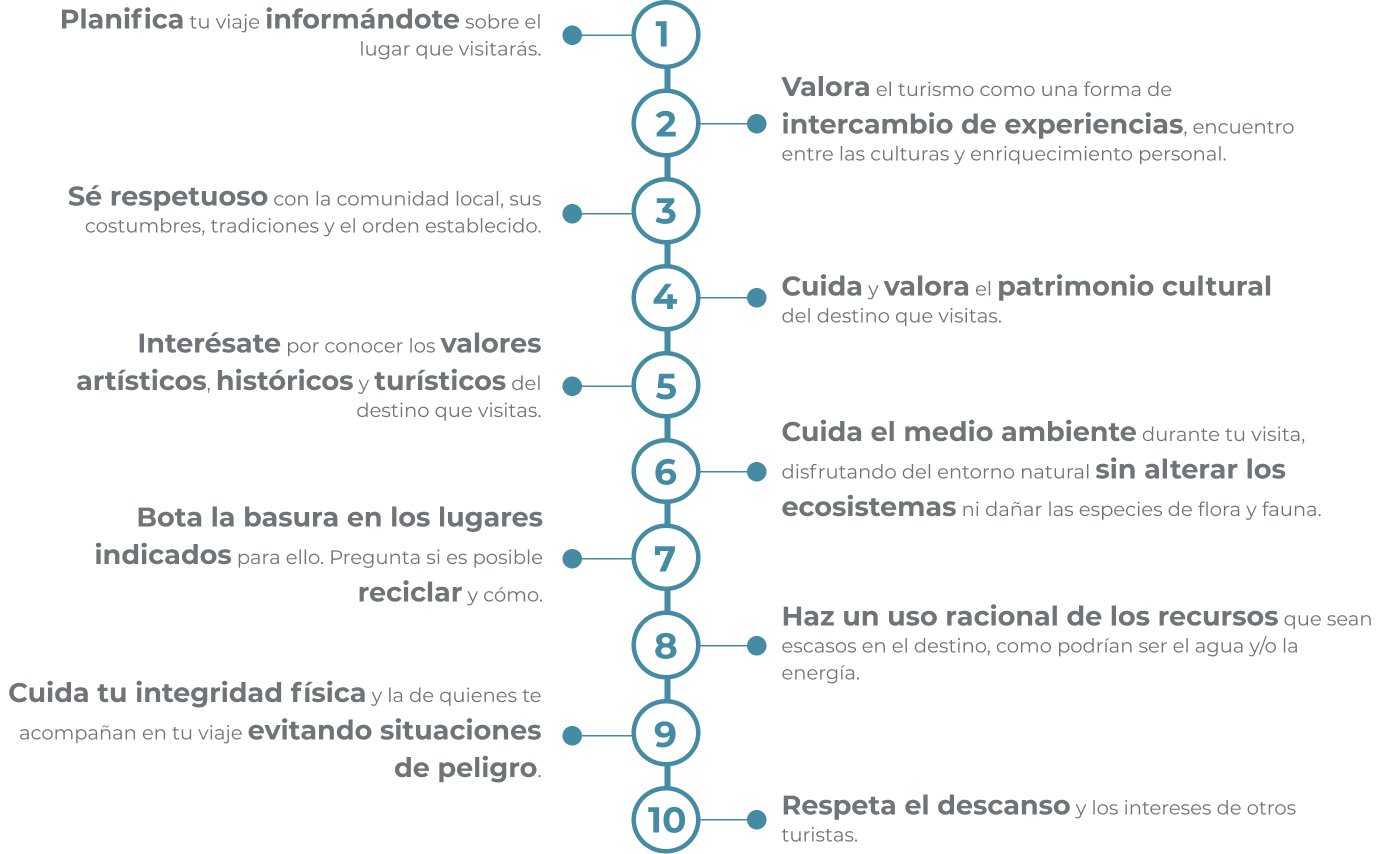
Check out the indispensable recommendations for your next trip to our country. here
Tourist confidence
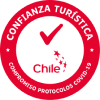
Choose the services that have joined our protocols against COVID
Social networks

Chile Travel Restrictions
Traveler's COVID-19 vaccination status
Traveling from the United States to Chile
Open for vaccinated visitors
COVID-19 testing
Not required
Not required for vaccinated visitors
Restaurants
Recommended in public spaces.
Chile entry details and exceptions
Ready to travel, find flights to chile, find stays in chile, explore more countries on travel restrictions map, destinations you can travel to now, dominican republic, netherlands, philippines, puerto rico, switzerland, united arab emirates, united kingdom, know when to go.
Sign up for email alerts as countries begin to open - choose the destinations you're interested in so you're in the know.
Can I travel to Chile from the United States?
Most visitors from the United States, regardless of vaccination status, can enter Chile.
Can I travel to Chile if I am vaccinated?
Fully vaccinated visitors from the United States can enter Chile without restrictions.
Can I travel to Chile without being vaccinated?
Unvaccinated visitors from the United States can enter Chile without restrictions.
Do I need a COVID test to enter Chile?
Visitors from the United States are not required to present a negative COVID-19 PCR test or antigen result upon entering Chile.
Can I travel to Chile without quarantine?
Travelers from the United States are not required to quarantine.
Do I need to wear a mask in Chile?
Mask usage in Chile is recommended in public spaces.
Are the restaurants and bars open in Chile?
Restaurants in Chile are open. Bars in Chile are .
Vaccinated travelers in Chile can skip quarantine with a test on arrival

Oct 7, 2021 • 3 min read

Chile is giving people the option to skip quarantine if they present a second negative COVID-19 test ©Lara Henriquez (Newlink)
A week after opening its borders to international visitors, Chile is changing its entry requirements again. From November, the recently-introduced five-day quarantine period will be scrapped for vaccinated travelers who take a second negative COVID-19 test on arrival.
Some of the world's best hiking trails—through deserts, volcanoes and snow-capped peaks—will soon be available to tourists as Chile opens up to tourists, just in time for summer in the southern hemisphere. And while there are plenty of new attractions to look forward to, including a new UNESCO site , there are a few steps to consider before traveling there, regardless of your COVID-19 status.

All travelers are required to fill in the Travelers Affidavit no later than 72 hours before traveling. Under new rules announced today, visitors have the option to complete the full five-day isolation period announced in September or temporarily isolate while awaiting the results of a COVD-19 PCR test, which can only be taken in Chile.
In both cases, travelers will need to get their vaccination certificate validated by the Chilean health ministry through the mobility pass app before traveling to Chile, a process that could take about a month. Chile's public health secretary Paula Daza has warned travelers not to book their trip until that step is completed to avoid the potential hassle of rescheduling flights.
We are happy! As of October 1st our borders reopen for international visitors. Chile is Back! Plan your trip following the rules and sanitary measures. Find out everything you need to know before traveling here https://t.co/FlML9y1VVk pic.twitter.com/1d3tKBwqfu — Chile Travel (@chiletravel) September 16, 2021
Vaccines the Chilean Health Department is currently accepting include Moderna, Pfizer, Johnson & Johnson, AstraZeneca, Sinopharm, Sinovac, CanSino and Sputnik V.
In addition to testing, travelers will need to take out health insurance with a minimum coverage of $30,000 USD to cover any medical expenses should they contract COVID-19 on their trip. Once they're in Chile, a tourism spokesperson said "every person must comply with the traveler’s follow-up process, which is done over a period of 14 days and consists of daily self-reporting of health status, current location, and testing" through the mobility pass.

Chile has reported a successful immunization campaign with almost 87% of the eligible population fully vaccinated, according to the health ministry .
When borders reopen, visitors will be permitted entry through dedicated airports in the capital Santiago , the beach resort of Iquique , and Antofagasta , the gateway to the Atacama Desert . American Airlines is improving connectivity between the US and Chile by launching direct flights between New York and Santiago this month.
There are also plenty of exciting attractions for travelers to enjoy too. Earlier this year, Chile added its seventh UNESCO site: Arica and the mummies of Chinchorro . The Chincorro people are believed to be the world’s oldest ancestral civilization and their mummies date back some 7000 years, meaning they pre-date the Egyptian mummies by two millennia. The glass-protected mummies can be viewed at a smaller version of the anthropological Museum of San Miguel de Azapa , just outside Arica , before a new and larger version of the museum opens in 2024.
You might also like: The best time to go to Chile 10 things to do in Patagonia Can’t-miss cuisine in South America
This article was first published Sep 16, 2021 and updated Oct 7, 2021.
Explore related stories
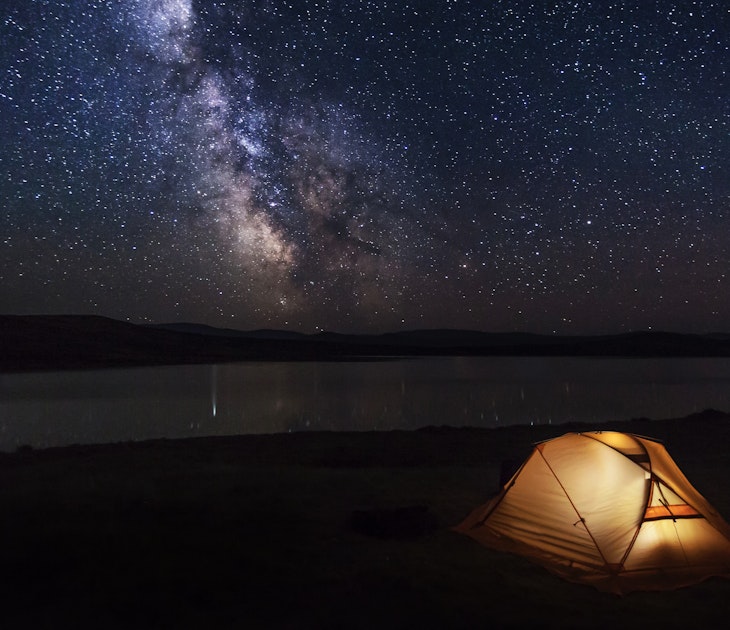
Astrotourism
Dec 27, 2023 • 8 min read
Spectacular things are happening in the skies all over the world in 2024. Read on for a year-long guide to where you will want to look up.

Dec 8, 2023 • 6 min read

Dec 1, 2023 • 6 min read

Nov 18, 2023 • 7 min read

Nov 6, 2023 • 8 min read
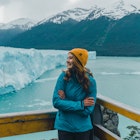
Sep 26, 2023 • 7 min read

Sep 23, 2023 • 7 min read
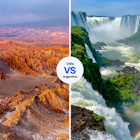
Sep 21, 2023 • 7 min read

Sep 17, 2023 • 7 min read
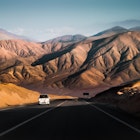
Aug 23, 2023 • 4 min read
- Search Please fill out this field.
- Manage Your Subscription
- Give a Gift Subscription
- Newsletters
- Sweepstakes
Chile Changes Travel Entry Requirements Due to Omicron Variant — What to Know
Due to the omicron variant, travelers from several Southern African nations have been barred entry to Chile.
Meena Thiruvengadam is a lifelong traveler and veteran journalist who has visited more than 50 countries across six continents. Her writing has appeared in The Wall Street Journal , Departures , TripSavvy , and other publications.
:max_bytes(150000):strip_icc():format(webp)/Meena-Thiruvengadam-0953f29450f840a786278802ac6a8162.jpeg)
Due to the omicron variant, Chile has changed its entry requirements once more.
Non-resident foreigners entering the country will need to abide by several requirements. Travelers over the age of 6 must be fully vaccinated with two doses of an approved vaccine and must upload their vaccination status to the Chilean health department. Approval of vaccination status may take up to 30 days. Upon arrival into the country, all travelers over the age of 2 must present a negative PCR test taken within 72 hours. All travelers must have health insurance with minimum coverage of $30,000 USD that includes all COVID-related coverage. Finally, all those entering Chile must undergo a mandatory PCR test performed upon arrival to Chile and a quarantine of five days or until a negative result of the PCR or antigen is obtained, according to the Chilean government's official travel site.
In addition to the new requirements, Chile will also suspend entry to travelers who have been in South Africa, Zimbabwe, Namibia, Botswana, Lesotho, Eswatini, and Mozambique for 14 days.
Initially, when the country opened to fully vaccinated visitors, there was a five-day quarantine protocol in place.
Chile twice closed its borders during the pandemic, first in March 2020. It reopened in late November before closing again in April 2021 as the new variants emerging around the world pushed countries to rethink their policies. Most recently, in November of 2021, Chile required a negative PCR test and vaccine approval but did not require vaccinated travelers to test again upon arrival, as stated by the State Department .
Chile's latest reopening comes as the government reports nearly 93% of the country's population has been vaccinated against COVID-19. The volume of new COVID-19 cases in the country has been steadily declining since June, according to the World Health Organization .
Meena Thiruvengadam is a Travel + Leisure contributor who has visited 50 countries on six continents and 47 U.S. states. She loves historic plaques, wandering new streets and walking on beaches. Find her on Facebook and Instagram .
Related Articles
Chile Travel Restrictions
Traveller's COVID-19 vaccination status
Travelling from Canada to Chile
Open for vaccinated visitors
COVID-19 testing
Not required
Not required for vaccinated visitors
Restaurants
Recommended in public spaces.
Ready to travel?
Find flights to chile, find stays in chile, explore more countries on travel restrictions map, destinations you can travel to now, dominican republic, netherlands, philippines, united arab emirates, united kingdom, united states, know when to go.
Sign up for email alerts as countries begin to open - choose the destinations you're interested in so you're in the know.
Can I travel to Chile from Canada?
Most visitors from Canada, regardless of vaccination status, can enter Chile.

Can I travel to Chile if I am vaccinated?
Fully vaccinated visitors from Canada can enter Chile without restrictions.
Can I travel to Chile without being vaccinated?
Unvaccinated visitors from Canada can enter Chile without restrictions.
Do I need a COVID test to enter Chile?
Visitors from Canada are not required to present a negative COVID-19 PCR test or antigen result upon entering Chile.
Can I travel to Chile without quarantine?
Travellers from Canada are not required to quarantine.
Do I need to wear a mask in Chile?
Mask usage in Chile is recommended in public spaces.
Are the restaurants and bars open in Chile?
Restaurants in Chile are open. Bars in Chile are .
Why I 'broke' quarantine in Chile — and what it's like entering the country now

With COVID-19 travel restrictions constantly in flux, even the best-laid plans can go awry.
In the days leading up to a dream trip to Chile , the rapid spread of the omicron variant — especially in the New York City area — put my entire journey at risk.
But ultimately, omicron proved to be less of a concern than expected. That's because my entry into Chile was marred not by the pandemic, but rather by an administrative issue that generated an incorrect vaccination status on my mobility pass to enter and travel around the country.
For more TPG news delivered each morning to your inbox, sign up for our free daily newsletter .
Due to that, and unbeknownst to me, the country's vaccine database indicated that I should quarantine for seven days upon arrival, which would render my entire eight-day trip moot. Yikes.
Luckily, that's not what ended up happening. Here's what transpired with my entry into Chile, how and why I technically "broke" quarantine and what you'll want to look out for if traveling here is on your agenda.
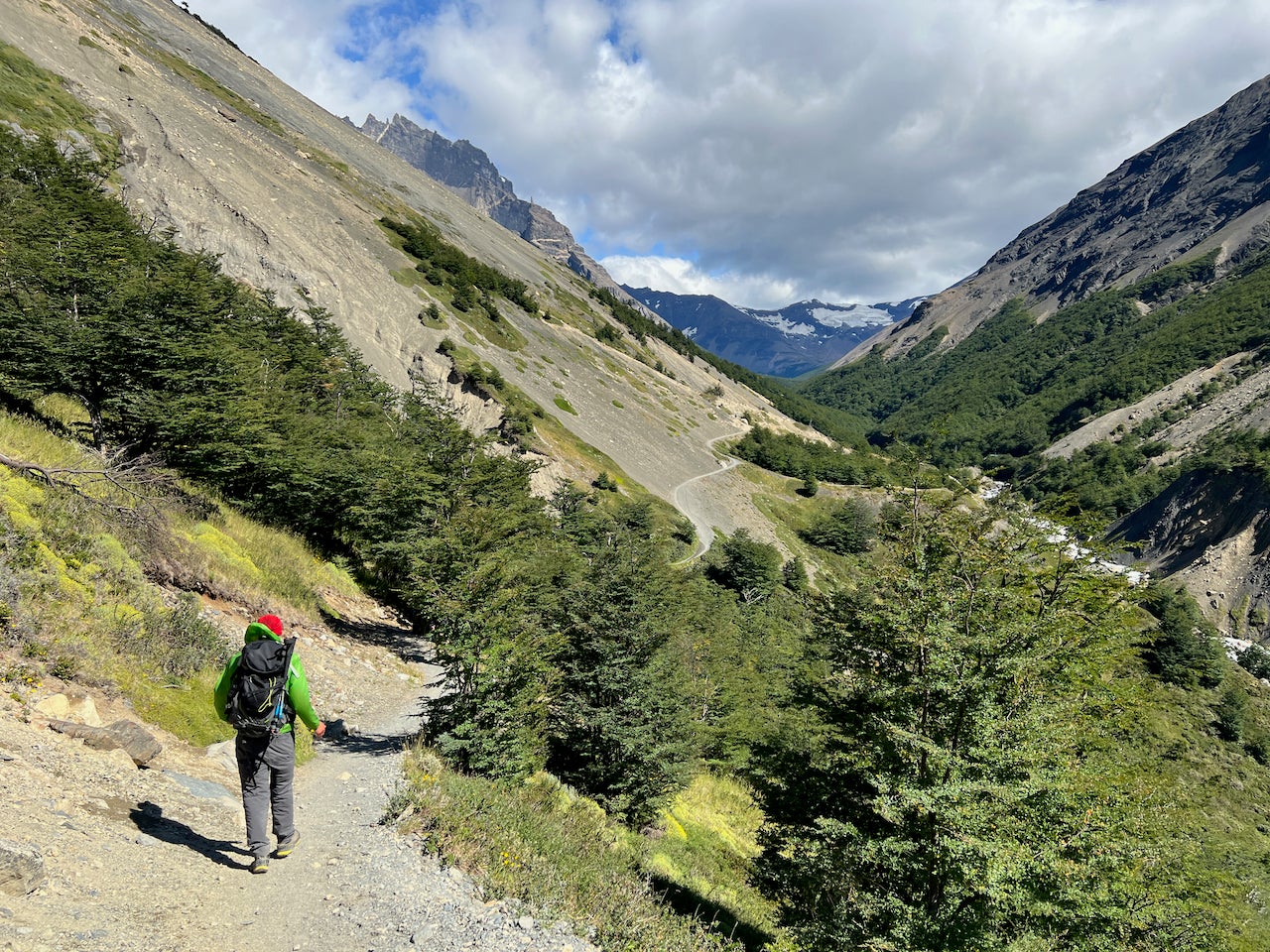
A bit of background
As a fully vaccinated U.S. traveler with a negative COVID-19 test result on arrival, I should have been free to roam around Chile. Yet throughout my travels, an incorrect vaccination status proved to be a thorn in my side.
Thankfully, I was still able to undertake a journey within the country (and had an incredible time doing so), but it wasn't without some stress along the way.
Before we get into my specific saga, though, let's walk through Chile's COVID-19 requirements.
Related: Chile now open to vaccinated visitors, dropping quarantine requirement
Overview of Chile's entry requirements
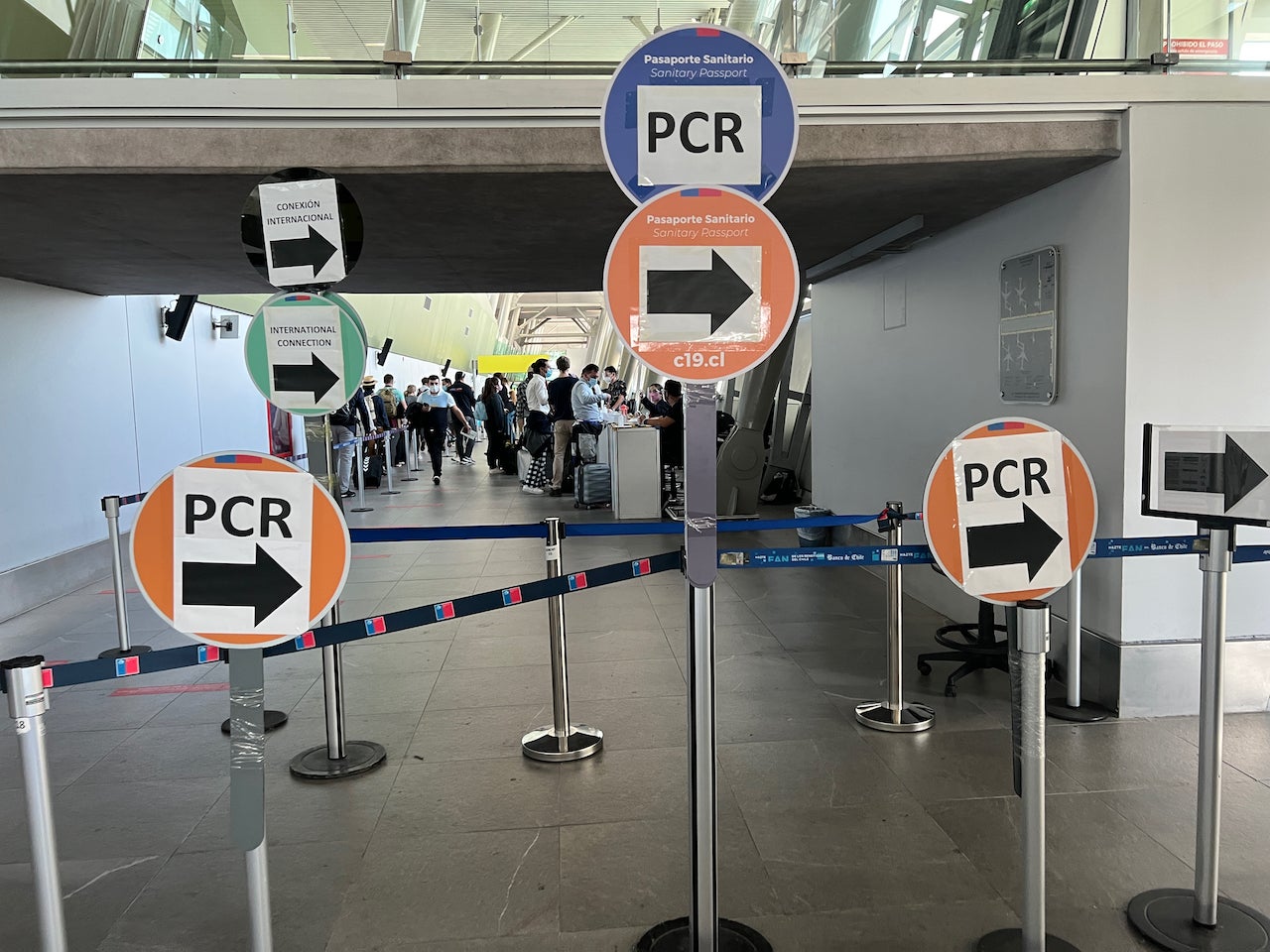
There are several steps to take to gain entry into Chile as an international visitor, and you'll want to get started on them as soon as you have firm trip plans since it can take some time for everything to process. While these access requirements are accurate as of publication, you'll want to check for the latest information here .
Before arrival
To travel freely within Chile, you must be fully vaccinated. The online process to have your vaccination status verified by the country's health ministry prior to arrival can take up to 30 days (but anecdotally, it is much shorter).
You'll also need a negative PCR test taken within 72 hours of departure along with a travel health insurance plan with a minimum of $30,000 in coverage.
What's more, you're required to fill out a "traveler's affidavit" form within 48 hours of departure. This is where you'll upload your negative PCR test and travel insurance information online.
After arrival
While your pre-arrival checklist may be complete, there are still a couple of requirements once you land in Santiago.
First, you'll take a mandatory PCR test on arrival at the airport (free of charge) and must quarantine until a negative result is sent to your email. This can take anywhere from six to 12 hours.
Additionally, you'll have to respond to a daily health questionnaire that asks if you are exhibiting COVID-19 symptoms.
My issues entering Chile
As previously mentioned, to avoid quarantine in Chile for anyone over the age of 6, you must submit proof of vaccination online prior to departure. It's recommended that you do so as soon as possible since the registration can take weeks to come through.
Thankfully, my vaccination verification only took a matter of several days, but this can vary greatly from traveler to traveler.
Once approved, visitors will be granted a digital vaccine mobility pass that displays a QR code to be used for travel to and within Chile and for activities like indoor dining and attractions. It should display the number of doses and dates of your vaccination.
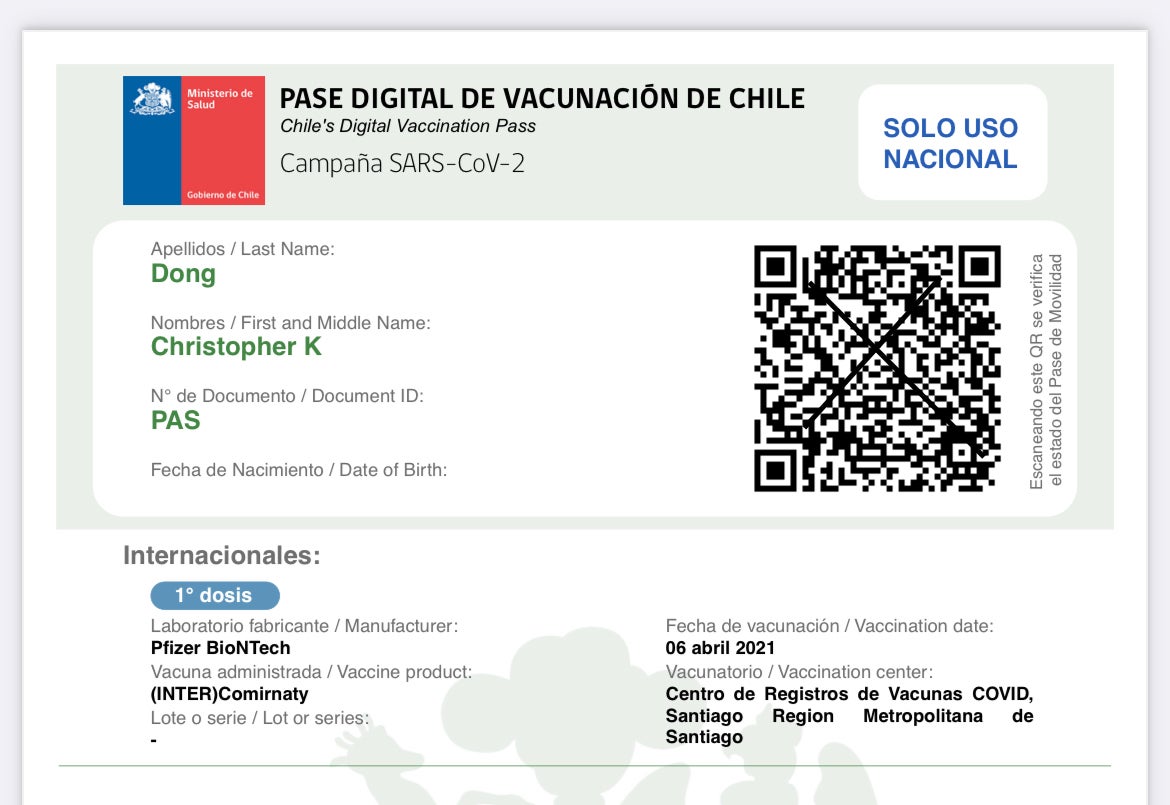
Packing my negative PCR test and what I thought was my valid mobility pass, in addition to completing my traveler's affidavit, I headed to the airport for my flight to Chile, eager to explore the streets of Santiago and the wilderness of Patagonia. My documents were verified by American Airlines agents at the airport, I boarded my flight and I was on my way.
Related: When will international travel return? A country-by-country guide to coronavirus recovery
Entering Chile
Time: 11 a.m.
Here's where I first ran into trouble.
Even though both Pfizer shots are displayed on my official U.S. Centers for Disease Control and Prevention-issued vaccine card that I uploaded online, unknown to me, Chilean health authorities only registered the first dose on my pass. How this was possible, I still do not know to this day.
After an overnight flight from New York (JFK), I landed in Santiago (SCL) late in the morning. It was only at this point that I realized the extent of my predicament.
I presented my paperwork — including the digital vaccine mobility pass, the traveler's affidavit form, a negative PCR test result and my travel insurance receipt — to a health representative at the airport.
"You'll need to quarantine for seven days," she said. The reason? My second dose did not appear on the vaccine form (pictured above).
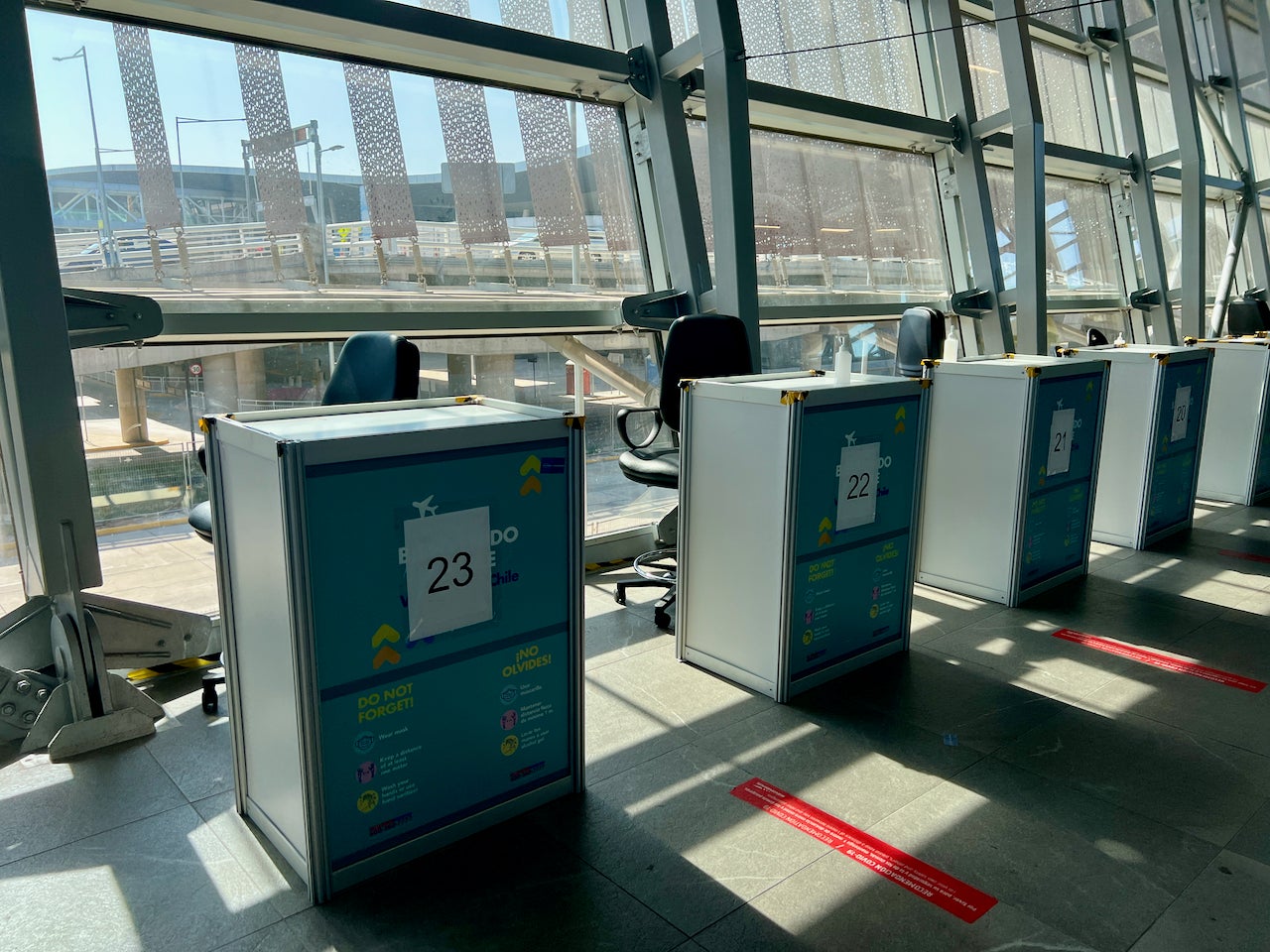
With my vaccine card physically in hand, a card that showed two Pfizer doses and an additional booster, I felt confident this piece of evidence would remove any confusion.
However, the airport health official and several other supervisors I spoke with insisted that the only way for me to avoid quarantine was to have my vaccination card approved online and a mobility pass with both my doses listed.
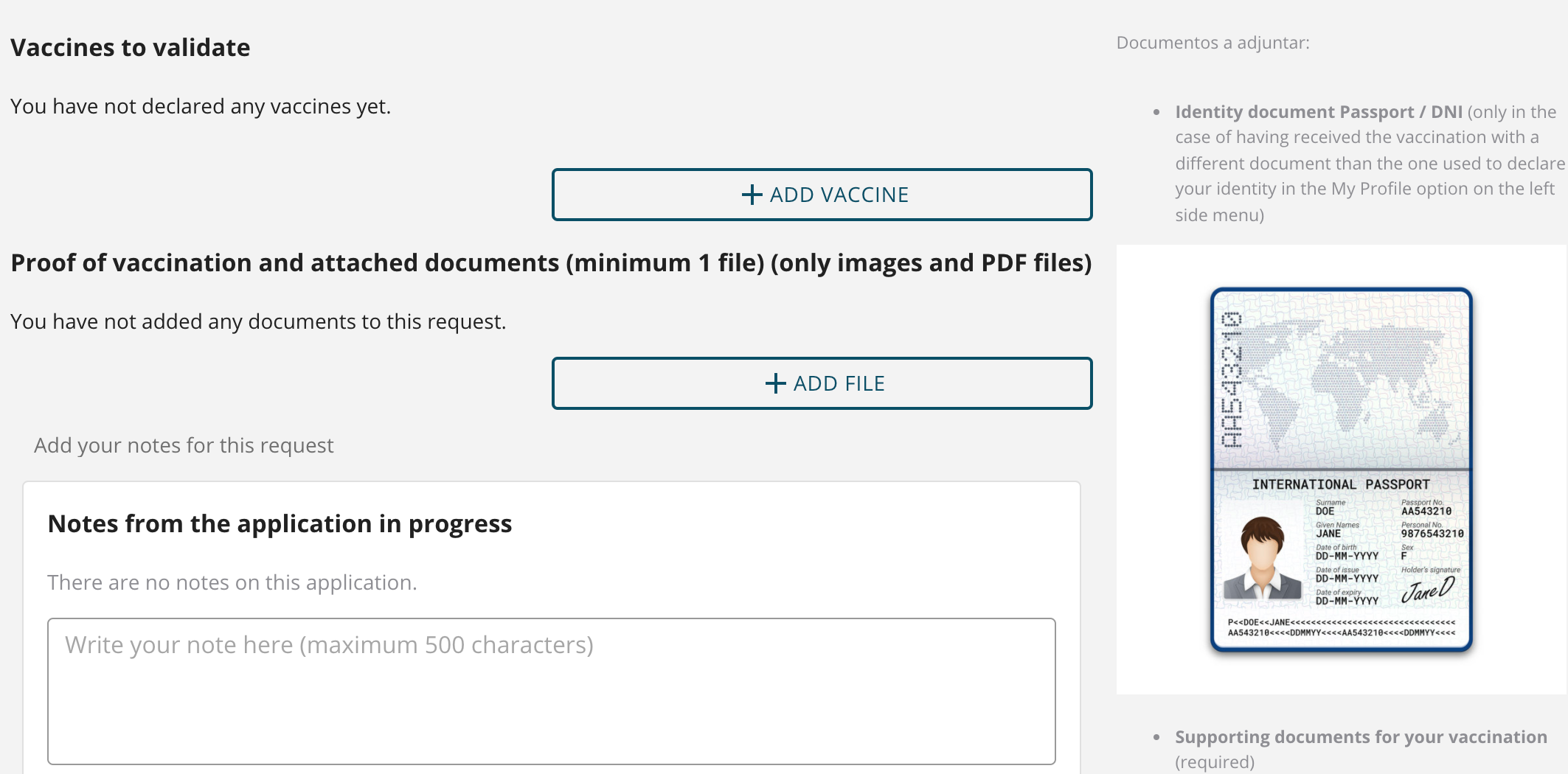
The official statement from airport authorities I spoke with was that there was no single person with the power to change my records within Chile's vaccination database.
Confused and more than a bit anxious, I continued through the airport to take my PCR test on arrival.
However, I knew I would have to figure out a plan once I arrived at my hotel. On the bright side, the testing process at Santiago International Airport was quite straightforward and well organized, taking mere minutes.
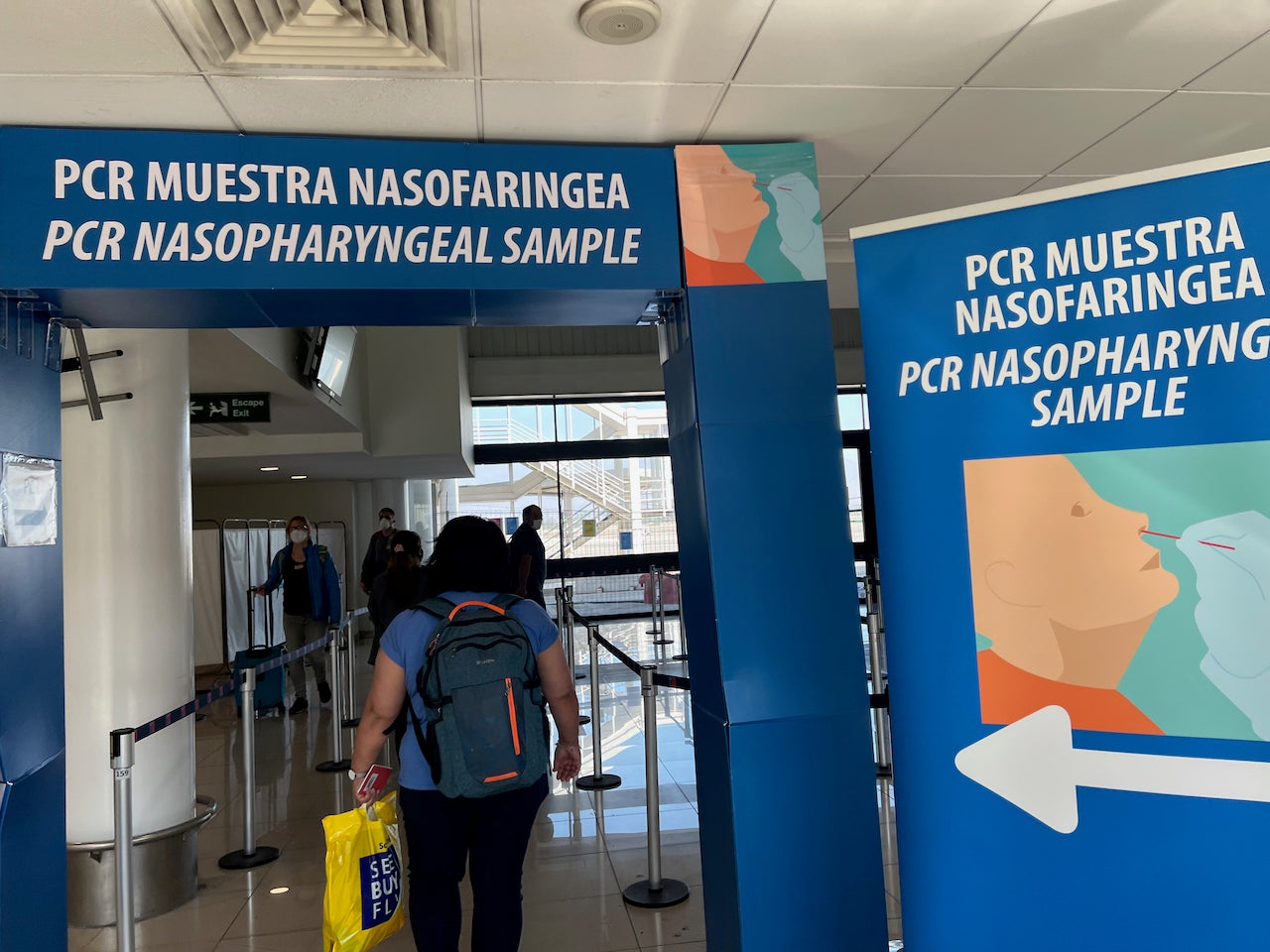
Once I made it through immigration and exited the airport, I immediately uploaded my vaccine card online for the second time hoping that someone at the health department would update my mobility pass to show that I'd received two doses of the vaccine.
At this point, I also began the process of reaching out to the U.S. Embassy in Chile and any contacts that I could find to get my situation sorted out or, if that proved unsuccessful, to expedite the approval of my second Pfizer dose.
An automated recording with the U.S. Embassy referred me to a generic email address. All the while, the only person who I could reach by phone at Chile's Ministry of Health told me there was no way to speak with the department that handled vaccination verifications.
In fact, the representative stated that my only course of action would be to see if I could speak to someone not from Chile but instead from the U.S. He mentioned that dozens (if not hundreds) of fully vaccinated travelers from around the world were being denied Chile's digital vaccine pass due to a backlog of requests.
Receiving my PCR test result
Time: 7 p.m.
Meanwhile, I waited for my PCR results to come through. I took an Uber to my hotel and quarantined there for the rest of the afternoon. All travelers, regardless of vaccination status, must remain in place until a negative test result is given.
By the evening, about seven hours after I was first tested at the airport, I received an email with the outcome of my test. Negative.
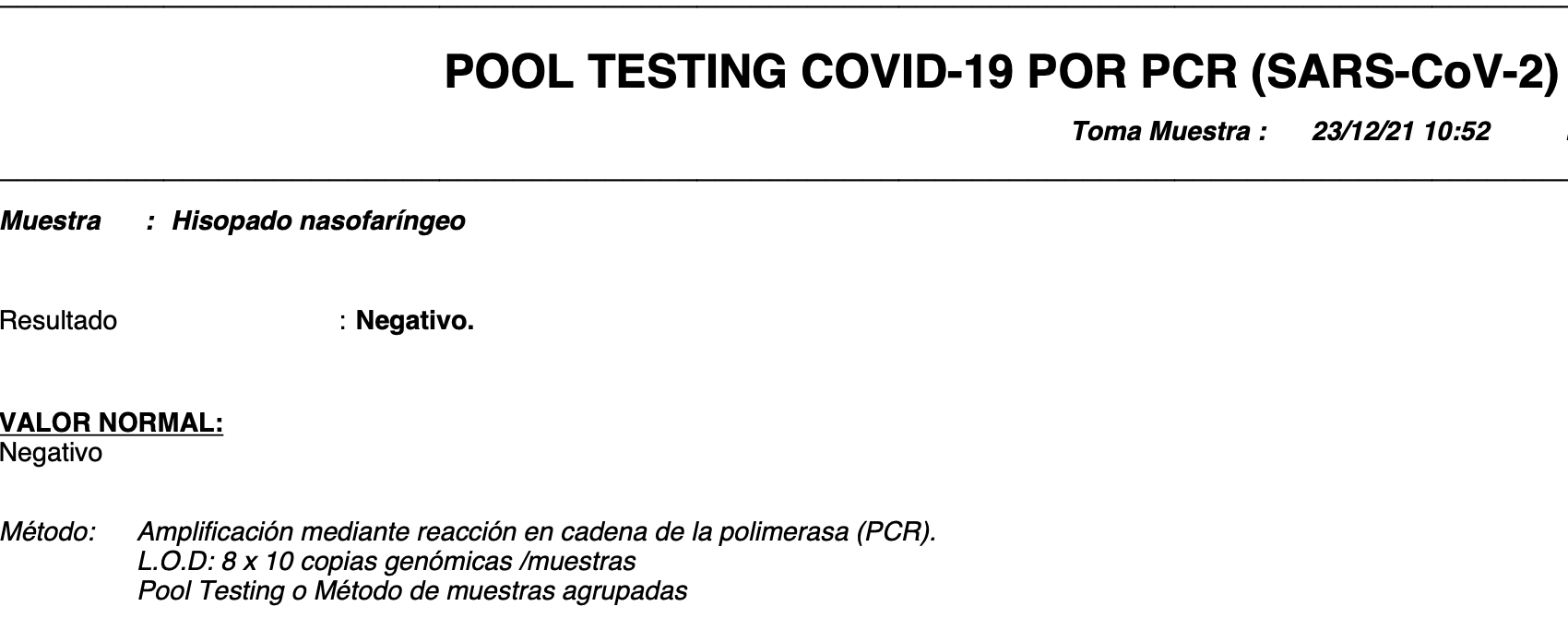
While I was in the clear for COVID-19, I didn't have the green light yet because of my incorrect vaccination status.
With no response from the U.S. Embassy or the Chilean Ministry of Health, I was still considering what exactly to do as I went to bed that evening.
My second dose approved
Time: 7 a.m. (next day)
Somewhat miraculously, I received an email early the following morning with verification of my second Pfizer dose.
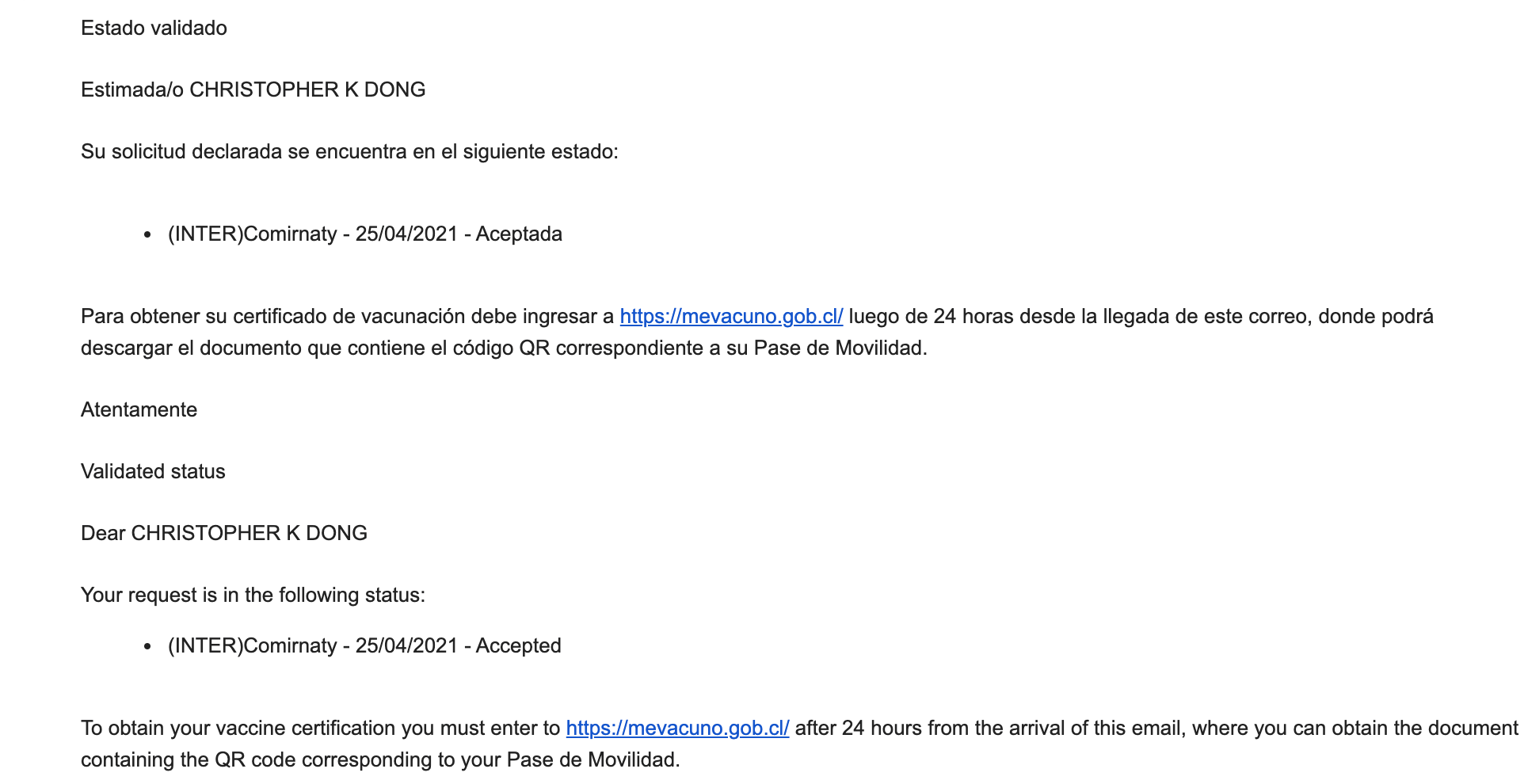
At this point, both doses appeared on my digital mobility pass, and this one-day headache was seemingly over.
Indeed, my pass now had both doses visible (previously, there was only one), and I accepted this email as proof. Therefore, I believed I was in the clear to venture out of my Santiago hotel room, continue with my Chilean adventure and, most importantly, leave quarantine.
My quarantine inspection
Or so I thought.
While exploring Santiago and during my first few days in Patagonia, several restaurants and attractions asked to see my mobility pass at the door. In all instances, my pass was scanned and I was allowed to proceed into the establishment. Perfect.
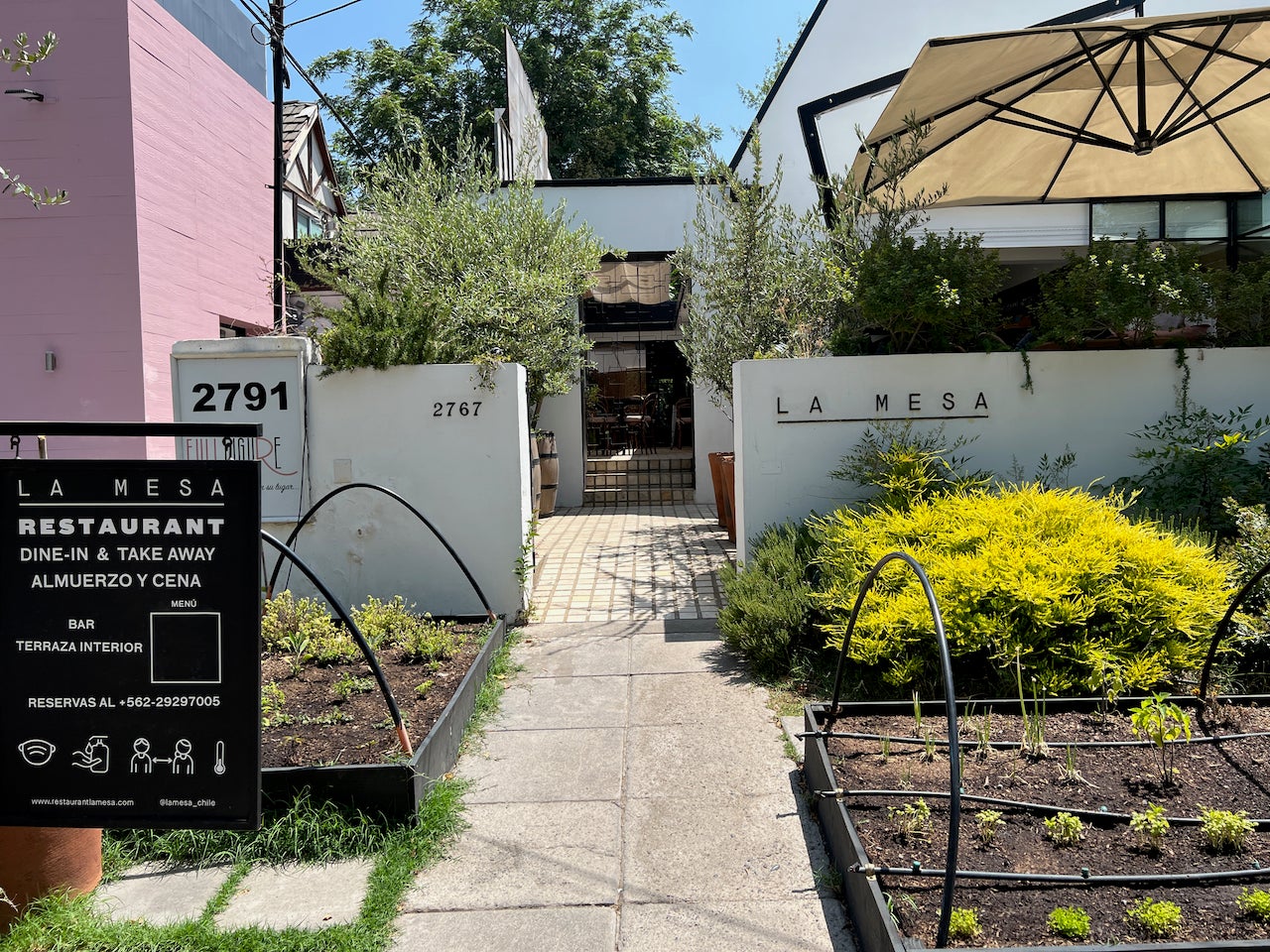
Additionally, my hotels — both in Santiago and in Puerto Natales — requested to see the pass at check-in. At no point during my trip did I have issues with entering restaurants, hotels or attractions.
For my domestic flight within Chile between Santiago and Puerto Natales (PNT), I was never even asked to present proof of vaccination.
The email from the Ministry of Health
Imagine my shock, then, when several days later, while already three hours south of Santiago by plane in Puerto Natales, I received an email in Spanish from Chile's Ministry of Health.
Although I don't speak much of the language, I could tell what it said almost without reading it. Earlier that day, a health official conducted an inspection of my original hotel in Santiago and found that, well, I wasn't there.
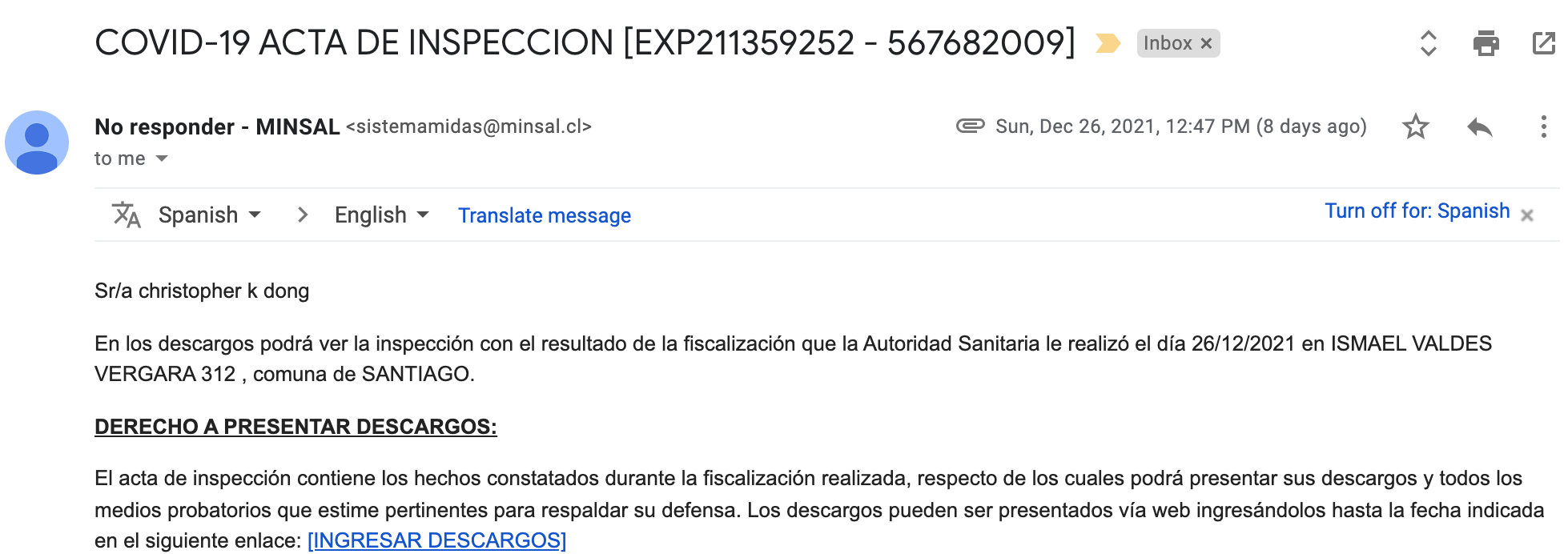
Included in this email was a link to upload documentation of my whereabouts and to explain why I was no longer quarantining.
I thought my Chilean entry saga was behind me, but now with this email, I had newfound worries about what I was to do exactly. The main concern that swirled at the back of my head: Did I actually break any laws by exiting quarantine, and would I be detained at the airport in Santiago upon departure from the country?
Both my Chilean friends and the hotel staff that I spoke with reassured me that this was a misunderstanding and assisted me in uploading my proof of full vaccination along with the negative PCR result I received upon arrival in Santiago.
Still, it was certainly a bit nerve-wracking to receive an email of this nature in a foreign country, especially one where you don't speak the language.
Departing Chile
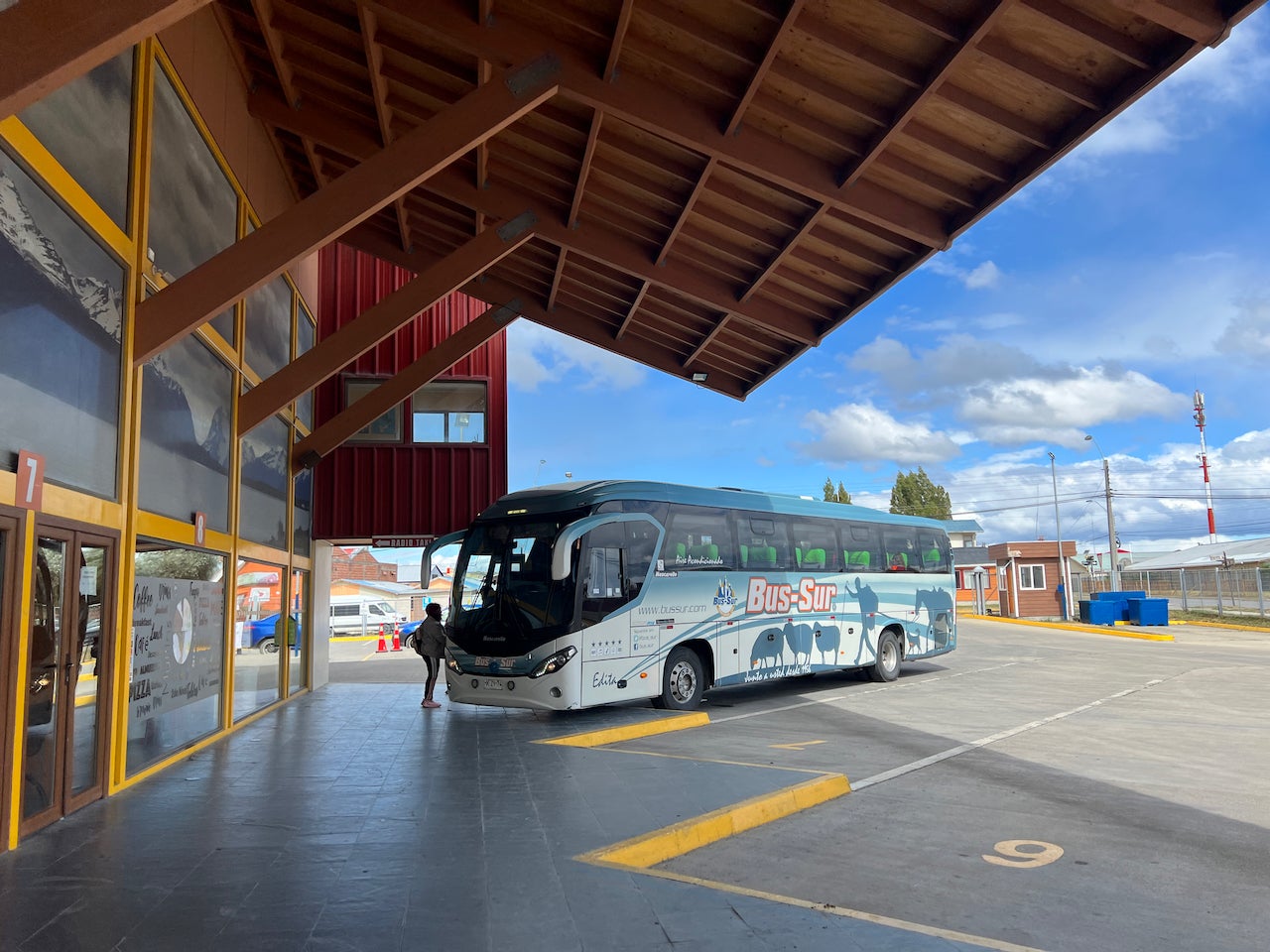
I had a long journey back from Patagonia, but thankfully, it was smooth sailing.
I took a three-hour bus ride from Puerto Natales to the Patagonian town of Punta Arenas. Once there, I caught my domestic flight to Santiago.
Again, similar to my journey from Santiago down south, my mobility pass and vaccination status were not checked while en route to Chile's capital.
In Santiago, I spent another 24 hours exploring the city before departing for the U.S. After a relaxing afternoon by my hotel pool, it was time to make the trip back to the airport.
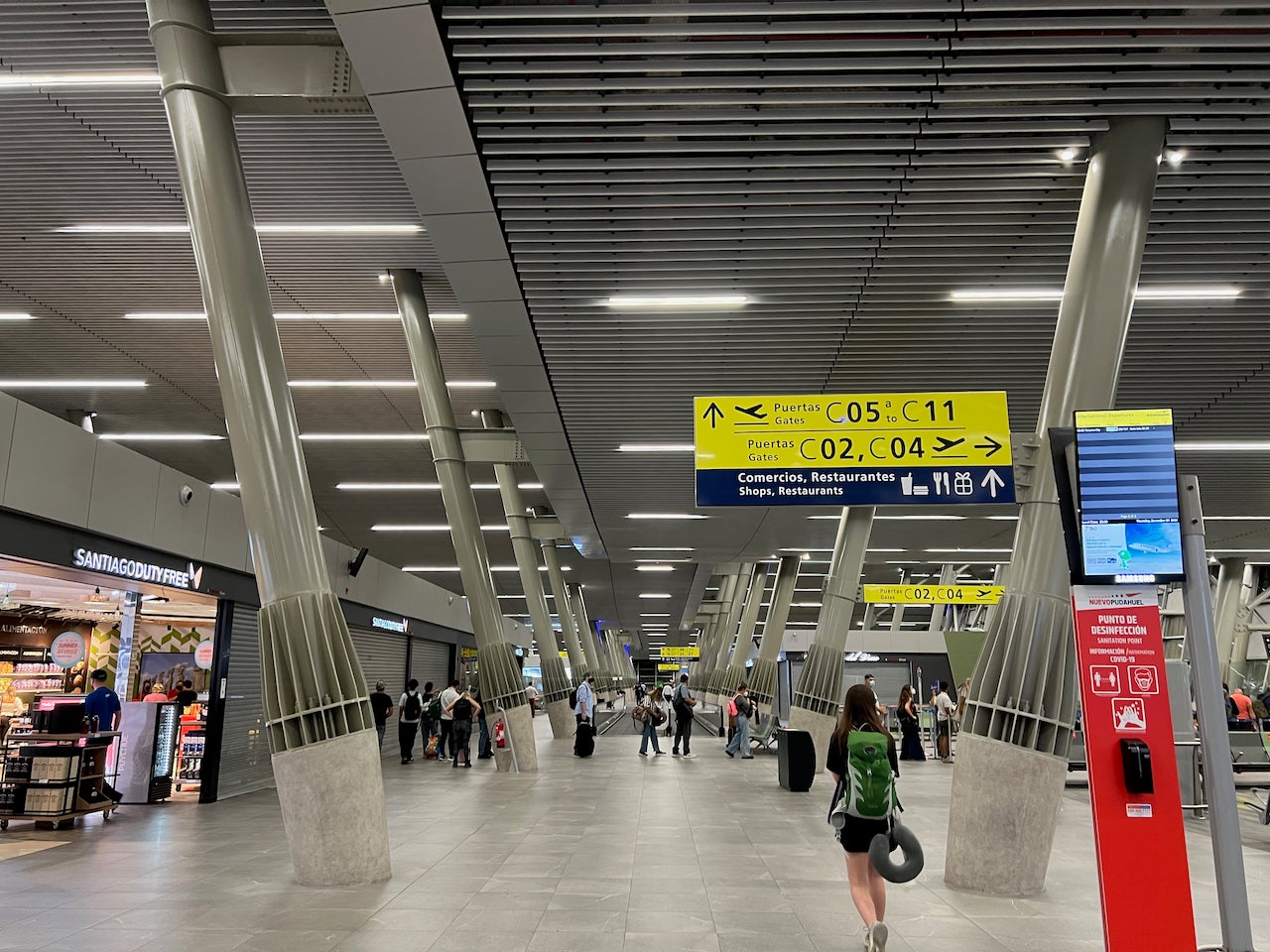
Throughout the check-in, immigration and boarding process to New York-JFK, I wasn't asked about my quarantine or vaccination status. In fact, my departure from Santiago back to the U.S. was incredibly easy. The only COVID-19 protocol required was a negative test within one day of departure to the U.S.
While I have no idea whether I'll have issues reentering Chile in the future, I can tell you with certainty that I had no problems exiting.
Bottom line
I've visited eight countries during the pandemic, but my entry into Chile proved to be the most daunting.
Upon arrival on the ground in Santiago, I was impressed with how streamlined the PCR testing process was, and the digital vaccination form ensured that Chile stayed safe for both visitors and residents alike.
However, the online pre-arrival process was much less clear, and I was frustrated that I couldn't find a person who had the authority to fix an obvious administrative mistake while on the ground.
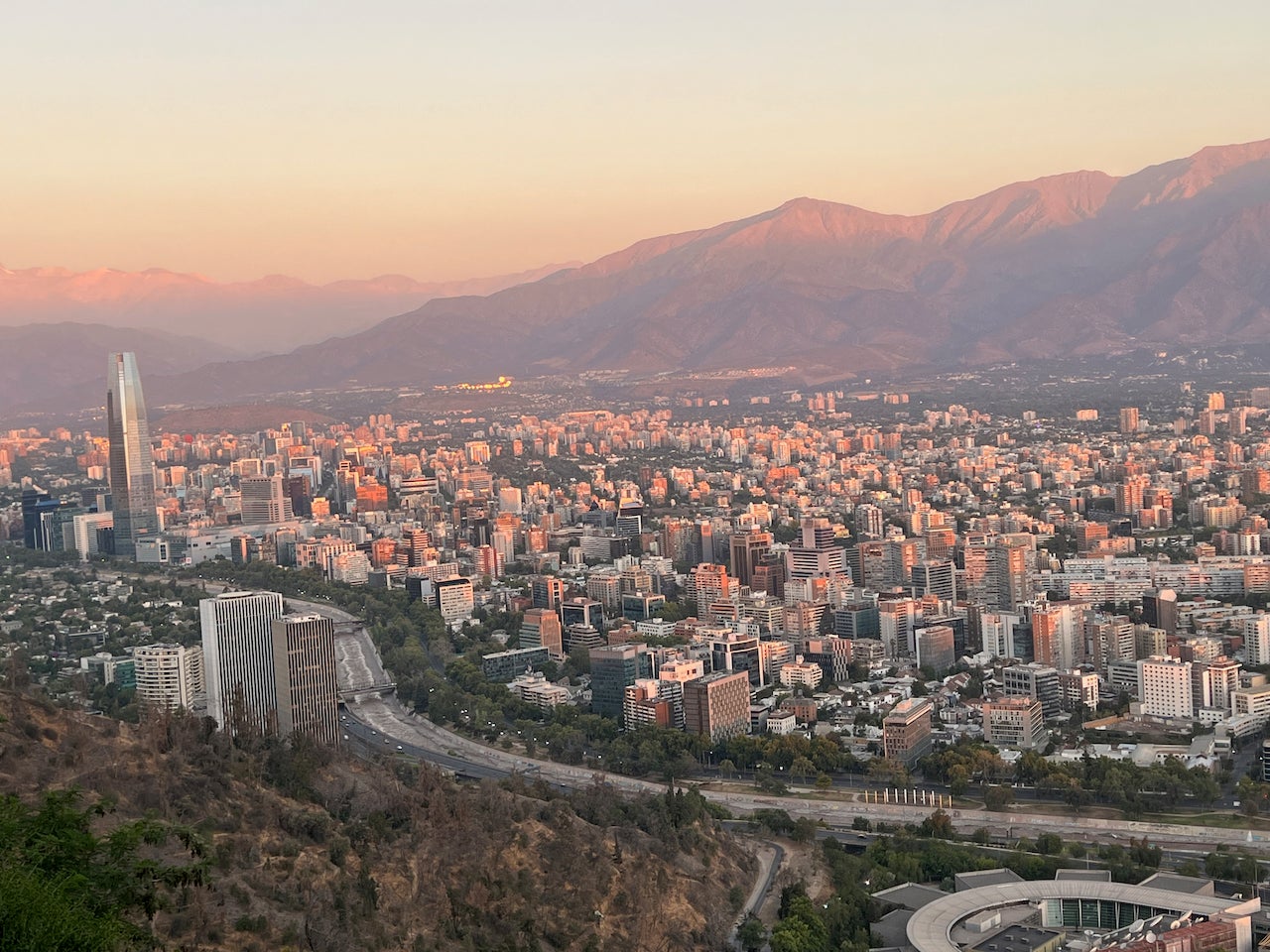
Nevertheless, I truly enjoyed my time in Chile. It's a naturally beautiful nation with a vibrant capital and incredibly friendly people. (More on my time in Patagonia to come.)
A word to the wise to anyone traveling to Chile: Make sure you are methodical about the entry process and, most importantly, have all of your vaccination doses clearly shown on your forms prior to departure. If you don't, you may deal with the stress of "breaking" quarantine or worse, be denied boarding when trying to return to the U.S.
Once you receive an email from Chile's Ministry of Health about an approved vaccination, check that both doses (for Pfizer and Moderna) appear. If not, resubmit your vaccination card until you are fully approved.
Update April 12, 2024
Information for u.s. citizens in the middle east.
- Travel Advisories |
- Contact Us |
- MyTravelGov |
Find U.S. Embassies & Consulates
Travel.state.gov, congressional liaison, special issuance agency, u.s. passports, international travel, intercountry adoption, international parental child abduction, records and authentications, popular links, travel advisories, mytravelgov, stay connected, legal resources, legal information, info for u.s. law enforcement, replace or certify documents.
Travel.State.Gov Newsroom
U.S. Passports News
International Travel News
U.S. Visas News
Intercountry Adoption News and Notices
Share this page:
Update on Change to U.S. Travel Policy Requiring COVID-19 Vaccination for nonimmigrant travel
Worldwide Visa Operations: Update
Employment-Based Fourth Preference (EB-4) Announcement
Suspension of Visa Services in Sudan
Diversity Visa 2024 Update
Nonimmigrant Visa Fee Increases to Take Effect June 17, 2023
India EB-3 Retrogression
Expiration of Covid-Era Visa Application Fee Receipts
Digital Visa Authorization (DVA) Proof of Concept
Final Rule Governing Public Charge Grounds of Visa Ineligibility
Visa Waiver Travel for Israeli Citizens
Important Update on Waivers of the Interview Requirement for Certain Nonimmigrant Visa Applicants
Department of State to Process Domestic Visa Renewals in Limited Pilot Program
Visa Information for Nationals of Haiti
Department of State/AILA Liaison Committee Meeting March 20, 2024
The Administration will end the COVID-19 vaccine requirements for international air travelers at the end of the day on May 11, the same day that the COVID-19 public health emergency ends. This means starting May 12, noncitizen nonimmigrant air passengers will no longer need to show proof of being fully vaccinated with an accepted COVID-19 vaccine to board a flight to the United States. CDC’s Amended Order Implementing Presidential Proclamation on Safe Resumption of Global Travel During the COVID-19 Pandemic will no longer be in effect when the Presidential Proclamation Advancing the Safe Resumption of Global Travel During the COVID-19 Pandemic is revoked .
Please see: https://www.whitehouse.gov/briefing-room/statements-releases/2023/05/01/the-biden-administration-will-end-covid-19-vaccination-requirements-for-federal-employees-contractors-international-travelers-head-start-educators-and-cms-certified-facilities/
External Link
You are about to leave travel.state.gov for an external website that is not maintained by the U.S. Department of State.
Links to external websites are provided as a convenience and should not be construed as an endorsement by the U.S. Department of State of the views or products contained therein. If you wish to remain on travel.state.gov, click the "cancel" message.
You are about to visit:

China May Day holiday spending delivers mixed picture on post-COVID recovery
B EIJING (Reuters) - Domestic travellers spent 166.9 billion yuan ($23.13 billion) during one of China's longest breaks, the May Day holiday, for a rise of 13.5% from pre-pandemic levels, government data showed on Monday, but expenditure per head lagged 2019 rates.
Boosting consumer confidence has presented a key challenge for Chinese authorities this year amid a declining property market, high youth unemployment and deflation pressures.
The total spent over the May 1 to 5 holiday was 12.7% higher than last year, shortly after China lifted COVID-19 curbs, and the tourism ministry recorded 295 million trips during the holiday.
But spending of 565.7 yuan per head during the event, a key opportunity for Chinese to go on family trips as the weather warms and flowers bloom, was down 11.5% from pre-COVID levels in 2019, Reuters calculations based on official data show.
The data dampens hopes for rebounding consumption after spending strengthened during another recent holiday, the Tomb Sweeping festival.
Domestic airline fares fell in the run-up to the holiday, as forecasts suggested more travellers were opting to drive instead, or had booked early to save.
The number of short trips grew noticeably during the break, Guotai Junan Securities said in a research note on Monday.
Growth in the number of trips in small cities and counties outstripped that in big cities, travel giant Trip.com added.
Box-office sales of 1.53 billion yuan roughly matched last year's figure of 1.52 billion over the corresonding period, the China Film Administration said.
"Formed Police Unit", a film about Chinese police on overseas peacekeeping missions for the United Nations, topped the holiday box-office charts with earnings of more than 400 million yuan, data from box-office tracker Maoyan showed.
($1=7.2147 Chinese yuan renminbi)
(Reporting by Sophie Yu and; Brenda Goh; Editing by Clarence Fernandez)

- Election 2024
- Entertainment
- Newsletters
- Photography
- Personal Finance
- AP Investigations
- AP Buyline Personal Finance
- AP Buyline Shopping
- Press Releases
- Israel-Hamas War
- Russia-Ukraine War
- Global elections
- Asia Pacific
- Latin America
- Middle East
- Election Results
- Delegate Tracker
- AP & Elections
- Auto Racing
- 2024 Paris Olympic Games
- Movie reviews
- Book reviews
- Personal finance
- Financial Markets
- Business Highlights
- Financial wellness
- Artificial Intelligence
- Social Media
Dubai plans to move its busy international airport to a $35 billion new facility within 10 years
This artist’s rendering provided by the government of Dubai shows plans for Al Maktoum International Airport at Dubai World Central in Dubai, United Arab Emirates. Dubai International Airport, the world’s busiest for international travel, will move its operations to the city-state’s second, sprawling airfield in its southern desert reaches “within the next 10 years” in a project worth nearly $35 billion, its ruler said Sunday, April 28, 2024. (Dubai government via AP)
This satellite image from Planet Labs PBC shows Al Maktoum International Airport at Dubai World Central on Friday, April 26, 2024. Dubai International Airport, the world’s busiest for international travel, will move its operations to the city-state’s second, sprawling airfield in its southern desert reaches “within the next 10 years” in a project worth nearly $35 billion, its ruler said Sunday, April 28, 2024. (Planet Labs PBC via AP)
- Copy Link copied

Dubai International Airport, the world’s busiest for international travel, will move its operations to the city-state’s second, sprawling airfield in its southern desert reaches “within the next 10 years” in a project worth nearly $35 billion, its ruler said Sunday.
Sheikh Mohammed bin Rashid Al Maktoum’s announcement marks the latest chapter in the rebound of its long-haul carrier Emirates after the coronavirus pandemic grounded international travel. Plans have been on the books for years to move the operations of the airport known as DXB to Al Maktoum International Airport at Dubai World Central which had also been delayed by the repercussions of the sheikhdom’s 2009 economic crisis.
“We are building a new project for future generations, ensuring continuous and stable development for our children and their children in turn,” Sheikh Mohammed said in an online statement. “Dubai will be the world’s airport, its port, its urban hub and its new global center.”
The announcement included computer-rendered images of curving, white terminal reminiscent of the traditional Bedouin tents of the Arabian Peninsula. The airport will include five parallel runways and 400 aircraft gates, the announcement said. The airport now has just two runways, like Dubai International Airport.
The financial health of the carrier Emirates has served as a barometer for the aviation industry worldwide and the wider economic health of this city-state. Dubai and the airline rebounded quickly from the pandemic by pushing forward with tourism even as some countries more slowly came out of their pandemic crouch.
The number of passengers flying through DXB surged last year beyond its total for 2019 with 86.9 million passengers. Its 2019 annual traffic was 86.3 million passengers. The airport had 89.1 million passengers in 2018 — its busiest-ever year before the pandemic, while 66 million passengers passed through in 2022.
Earlier in February, Dubai announced its best-ever tourism numbers, saying it hosted 17.15 million international overnight visitors in 2023. Average hotel occupancy stood at around 77%. Its boom-and-bust real estate market remains on a hot streak , nearing all-time high valuations.
But as those passenger numbers skyrocketed, it again put new pressure on the capacity of DXB, which remains constrained on all sides by residential neighborhoods and two major highways.
Al Maktoum International Airport, some 45 kilometers (28 miles) away from DXB, opened in 2010 with one terminal. It served as a parking lot for Emirates’ double-decker Airbus A380s and other aircraft during the pandemic and slowly has come back to life with cargo and private flights in the time since. It also hosts the biennial Dubai Air Show and has a vast, empty desert in which to expand.
The announcement by Sheikh Mohammed noted Dubai’s plans to expand further south. Already, its nearby Expo 2020 site has been offering homes for buyers.
“As we build an entire city around the airport in Dubai South, demand for housing for a million people will follow,” Dubai’s ruler said. “It will host the world’s leading companies in the logistics and air transport sectors.”
However, financial pressures have halted the move in the past. Dubai’s 2009 financial crisis, brought on by the Great Recession, forced Abu Dhabi to provide the city-state with a $20 billion bailout.
Meanwhile, the city-state is still trying to recover after the heaviest rainfall ever recorded in the UAE , which disrupted flights and commerce for days.

- International edition
- Australia edition
- Europe edition
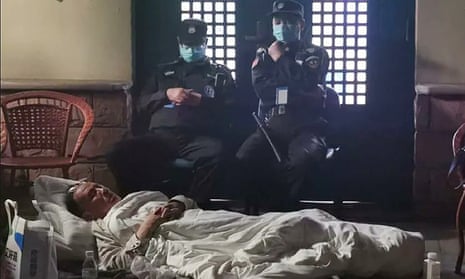
First scientist to publish Covid sequence in China protests over lab ‘eviction’
Zhang Yongzhen stages sit-in protest, as government attempts to avoid scrutiny over handling of outbreak
The first Chinese scientist to publish a genomic sequence of the Covid-19 virus, in defiance of government orders, staged a sit-in protest after claiming he was locked out of his laboratory over the weekend.
Zhang Yongzhen, a virologist, said in an online post on Monday that he and his team had been given a sudden eviction notice from their lab, and guards had barred him from entering it over the weekend. The post, published on Weibo, was later deleted, Associated Press (AP) reported.
After extensive media and social media coverage, on Wednesday Zhang said he and his team had been “tentatively” allowed to resume work inside the lab.
“I would like to sincerely thank all the netizens and people from all walks of life who have supported me and my team for a long time,” he said on Weibo.
Zhang had been sitting outside the lab since Sunday. Photos posted online show a man purported to be Zhang sleeping on the ground.
The dispute between Shanghai Public Health Clinical Center and Dr. Zhang Yongzhen's team continues. Dr. Zhang allegedly shared photos of himself sleeping on the floor at the entrance of the laboratory. https://t.co/K5ztBAv6yE pic.twitter.com/6wBkkLLQnB — Yanzhong Huang (@YanzhongHuang) April 29, 2024
Zhang published his scientific findings about Covid-19 without government approval in January 2020. He and his team have since been subject to a series of setbacks, demotions and oustings, of which the eviction appears to be the latest.
The Shanghai Public Health Clinical Center said in a statement that Zhang’s lab was closed for “safety reasons” and renovations. It said Zhang’s team had been given alternative lab space.
However, Zhang said the offer was not made until after his team was evicted, and that the new lab did not meet the team’s required safety standards.
“I won’t leave, I won’t quit, I am pursuing science and the truth!” he said in the since-deleted Weibo post. “The Public Health Center are refusing to let me and my students go inside the laboratory office to take shelter.”
Teacher Li, who runs an information-sharing and activism-monitoring account on X, said students had protested against the closure and clashed with security guards.
Zhang, when reached by phone on Tuesday, said it was “inconvenient” for him to speak, but a colleague confirmed to AP on Monday the protest was taking place.
The move shows how the Chinese government continues to pressure and control scientists, seeking to avoid scrutiny of its handling of the coronavirus outbreak .
After sequencing the virus on 5 January 2020, Zhang and his team initially sent a notice to Chinese authorities warning of its potential to spread. The next day his lab was temporarily shut down by China’s top health official.
Foreign scientists called for Zhang and other Chinese scientists to be allowed to publish the sequencing. The following week Zhang published his sequence – without authority – allowing global health authorities to begin testing for Covid-19, finding that it was spreading outside China. It also kickstarted the development of tests, vaccinations and other pandemic measures.
Internationally Zhang was lauded, receiving prizes in recognition of his work, but domestically he came under pressure. He was barred from collaborating with some former research partners and removed from his post at the Chinese Center for Disease Control and Prevention.
During the pandemic, the government also arrested citizen journalists who sought to report on the impact of the outbreak on people and hospitals.
In 2021 Zhang told the New York Times he did not regret his actions. “I trusted myself. I have so much experience, my team has made so many discoveries over the years, that we were able to make accurate judgments,” he said.
Zhang’s team appeared to receive a lot of public support on Weibo, where related hashtags were viewed by tens of millions of Chinese. “How can the country develop if we treat scientific researchers like this?” one said.
Some article links appeared to have been removed since they were posted but extensive discussion of Zhang’s dispute with the Shanghai health authority remained online on Tuesday afternoon.
- Coronavirus
- Infectious diseases
- Asia Pacific
- Medical research
- Microbiology
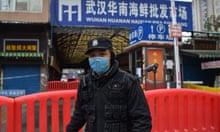
Newly released Chinese Covid data points to infected animals in Wuhan

Doctor who exposed China’s cover-up of Sars crisis dies aged 91
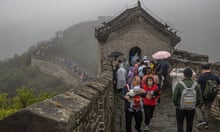
China to reopen to foreign tourists for first time since Covid crisis

Detained activist fears for missing zero-Covid protesters in China
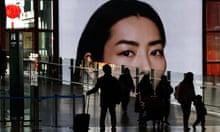
China claims ‘decisive victory’ over Covid amid doubt over figures
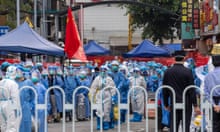
China’s provinces spent almost £43bn on Covid measures in 2022

Eight in 10 people in China caught Covid since early December, say officials

Chinese flock to Hong Kong to get private Covid booster shots

Chinese warned not to visit elderly relatives as Covid spreads from cities
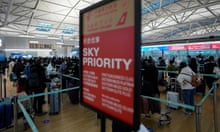
China halts short-term visas for South Korea and Japan over Covid travel curbs
Most viewed.
We’re sorry, this site is currently experiencing technical difficulties. Please try again in a few moments. Exception: request blocked
We've detected unusual activity from your computer network
To continue, please click the box below to let us know you're not a robot.
Why did this happen?
Please make sure your browser supports JavaScript and cookies and that you are not blocking them from loading. For more information you can review our Terms of Service and Cookie Policy .
For inquiries related to this message please contact our support team and provide the reference ID below.

COMMENTS
Inicio. Travel to Chile Plan. Updated the day 17 January, 2024. Entry Requirements. Frequently asked questions. Check here the Travel to Chile Plan for all the information on the requirements and protocols to enter the country.
Entry and Exit Requirements. U.S. citizens entering Chile must have a valid passport. U.S. citizens traveling to Chile for recreation, tourism, business, or academic conferences do not need to obtain a visa prior to their arrival in Chile. A Tourist Card will be issued for a stay of up to 90 days. An extension of stay for another 90 days is ...
Check with airlines and transit/destination countries for how COVID testing and vaccine requirements might impact travel. Assistance: U.S. Embassy Santiago, Chile. Phone number: +56 2 2330 3716 (8:30 A.M. to 5:00 P.M) and +56 2 2330 3000 (After business hours) Email address: [email protected]. Embassy website: https://cl.usembassy.gov/.
U.S. Embassy, Santiago, Chile Health Alert - U.S. Embassy Santiago, Chile . Location: Worldwide. Event: On October 25, President Biden announced the United States will adopt a global air travel policy. This policy prioritizes public health, protecting U.S. citizens and residents as well as those who come to visit us.
Official U.S. government health recommendations for traveling. Provided by the U.S. Centers for Disease Control and Prevention (CDC). ... COVID-19: All eligible travelers should be up to date with their COVID-19 vaccines. ... If your travel plans in Chile include outdoor activities, take these steps to stay safe and healthy during your trip.
Call us in Washington, D.C. at 1-888-407-4747 (toll-free in the United States and Canada) or 1-202-501-4444 (from all other countries) from 8:00 a.m. to 8:00 p.m., Eastern Standard Time, Monday through Friday (except U.S. federal holidays). See the State Department's travel website for the Worldwide Caution and Travel Advisories.
Chile entry details and exceptions. Travelers who are under 18 years of age do not have any requirements to enter Chile. If you wish to enter as a tourist and you are from Venezuela, Haiti, the Dominican Republic, Cuba, or Dominica, prior to your arrival in Chile, you must have a Transitory Stay Visa. Dominicans holding a valid North American ...
In addition to testing, travelers will need to take out health insurance with a minimum coverage of $30,000 USD to cover any medical expenses should they contract COVID-19 on their trip. Once they're in Chile, a tourism spokesperson said "every person must comply with the traveler's follow-up process, which is done over a period of 14 days ...
U.S. Adds Bahamas and 5 More Destinations to Highest COVID-19 Travel Warning Level U.S. Officials Tell Americans to Avoid Jamaica in Latest Travel Warning Austria Lifts Lockdown for Citizens ...
Chile COVID-19 management. After closing its borders to nonessential travel in March 2020, Chile briefly reopened for five months on Nov. 23, ... High Level of COVID-19 and the U.S. Department of State's travel advisory is Level 3: Reconsider Travel, due to COVID-19.
Travel Advisory. July 17, 2023. Chile - Level 2: Exercise Increased Caution. U C. Reissued with obsolete COVID-19 page links removed. Exercise increased caution in Chile due to crime and civil unrest. Country Summary: Street crime (e.g., muggings, pick-pocketing, theft) is common in Chile. Rates of violent crime, such as assaults, homicide ...
More. Learn about CDC's Traveler Genomic Surveillance Program that detects new COVID-19 variants entering the country. Sign up to get travel notices, clinical updates, & healthy travel tips. CDC Travelers' Health Branch provides updated travel information, notices, and vaccine requirements to inform international travelers and provide ...
Chile Eases COVID-19 Entry Requirements. The Chilean Ministry of Health updated the country's entry requirements, now requiring international travelers to Chile to fill in the Travel Affidavit. The Protected Borders Plan, which the Ministry of Health has had in place since its reopening, has lowered the country's alert level to its lowest level ...
For emergency American Citizens Services, including emergency passports, please visit our website for additional information. Assistance: U.S. Embassy Santiago, Chile. Phone number: +56 2 2330 3716 (8:30 A.M. to 5:00 P.M) and +56 2 2330 3000 (After business hours) Email address: [email protected]. Embassy website: https://cl.usembassy.gov/.
Find continuously updated travel restrictions for Chile such as border, vaccination, COVID-19 testing, and quarantine requirements. ... Find continuously updated travel restrictions for Chile such as border, vaccination, COVID-19 testing, and quarantine requirements. Flights. Hotels. Cars. Flight+Hotel. ... Send us a correction to the travel ...
With COVID-19 travel restrictions constantly in flux, even the best-laid plans can go awry.. In the days leading up to a dream trip to Chile, the rapid spread of the omicron variant — especially in the New York City area — put my entire journey at risk.. But ultimately, omicron proved to be less of a concern than expected. That's because my entry into Chile was marred not by the pandemic ...
Object moved to here.
Last Updated: May 4, 2023. The Administration will end the COVID-19 vaccine requirements for international air travelers at the end of the day on May 11, the same day that the COVID-19 public health emergency ends. This means starting May 12, noncitizen nonimmigrant air passengers will no longer need to show proof of being fully vaccinated with ...
Safest Cities for Millennial Travelers. According to BHTP, Millennials (ages 25-44) tend to travel farther afield. "Hence, the high ratings for Singapore, Dubai and Seoul," say the authors of ...
As a major component of international trade and foreign exchange, the travel and tourism industry is a key driver of cultural and socio-economic progress, providing livelihoods for hundreds of millions of people (Abbas et al., 2021).The COVID-19 pandemic is a combination of a health, socio-political, and economic crisis that has adversely affected more than 200 countries or regions worldwide.
The group said the 11 largest U.S. airlines issued $43 billion in customer refunds from 2020 through 2023. The Transportation Department issued a separate rule requiring airlines and ticket agents to disclose upfront what they charge for checked and carry-on bags and canceling or changing a reservation.
Event: COVID-19 Update - March 25. As of March 25, the Ministry of Health has confirmed 1,142 cases of COVID-19 in Chile. The government of Chile has implemented enhanced screening and quarantine measures to reduce the spread of COVID-19. Travelers should be prepared for travel restrictions to be put into effect with little or no advance notice.
The total spent over the May 1 to 5 holiday was 12.7% higher than last year, shortly after China lifted COVID-19 curbs, and the tourism ministry recorded 295 million trips during the holiday ...
3 of 3 | . This satellite image from Planet Labs PBC shows Al Maktoum International Airport at Dubai World Central on Friday, April 26, 2024. Dubai International Airport, the world's busiest for international travel, will move its operations to the city-state's second, sprawling airfield in its southern desert reaches "within the next 10 years" in a project worth nearly $35 billion ...
The first Chinese scientist to publish a genomic sequence of the Covid-19 virus, in defiance of government orders, staged a sit-in protest after claiming he was locked out of his laboratory over ...
Before departure to the United States, a required test, combined with the CDC recommendations to get tested again 3-5 days after arrival and stay home for 7 days post-travel, will help slow the spread of COVID-19 within US communities from travel-related infections.
The China Tourism Academy predicted that global Chinese tourist numbers will reach 130 million in 2024—84% of levels before Covid-19 struck. In 2019, some 155 million outbound Chinese travelers ...
April 29, 2024 at 2:16 PM PDT. Listen. 1:22. Chile's government is calling for updating security measures and a new antiterrorist law as the country grapples with the murder of three policemen ...